Venezuela is a country blessed with an abundance of wildlife, including a wide variety of bird species. With a wide range of habitats, from tropical rainforest to savanna, Venezuela is home to a rich array of birds, from hummingbirds and raptors to toucans and parrots.
With over 1000 species of birds, Venezuela is a popular destination for bird watching, offering a unique opportunity to observe some of the rare and spectacular birds of South America.
1. Venezuelan Troupial
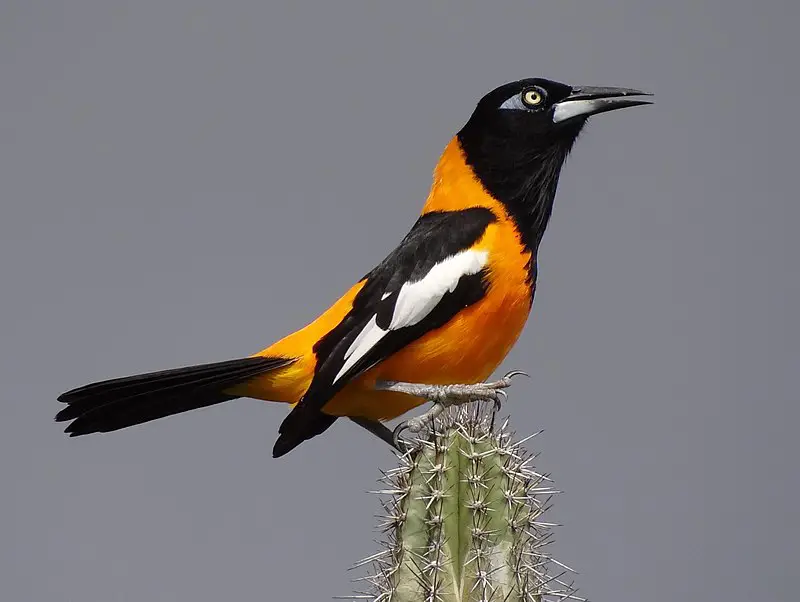
The Venezuelan troupial (Icterus icterus) is Venezuela’s national bird and can be found in Colombia, Venezuela and some Caribbean islands such as Aruba, Curaçao, Bonaire, Trinidad and Puerto Rico.
It was previously part of a superspecies known simply as the troupial with the orange-backed troupial and Campo troupial but has since been split off.
The name ‘troupial’ comes from French ‘toupiare’, which means “troop” due to their tendency to gather in flocks outside of breeding season.
They are medium sized birds with males being slightly larger than females – both have black bodies that contrast against a bright yellow head or crest.
Their wingspan averages at around 35cm long making them quite agile flyers when they migrate each year between November to April for warmer climates.
Scientific classification:
| Kingdom | Animalia |
| Phylum | Chordata |
| Class | Aves |
| Order | Passeriformes |
| Family | Icteridae |
| Genus | Icterus |
| Species | I. icterus |
Also Featured In: Birds that You’ll Find in Puerto Rico, Common Latin America Birds
2. American Flamingo
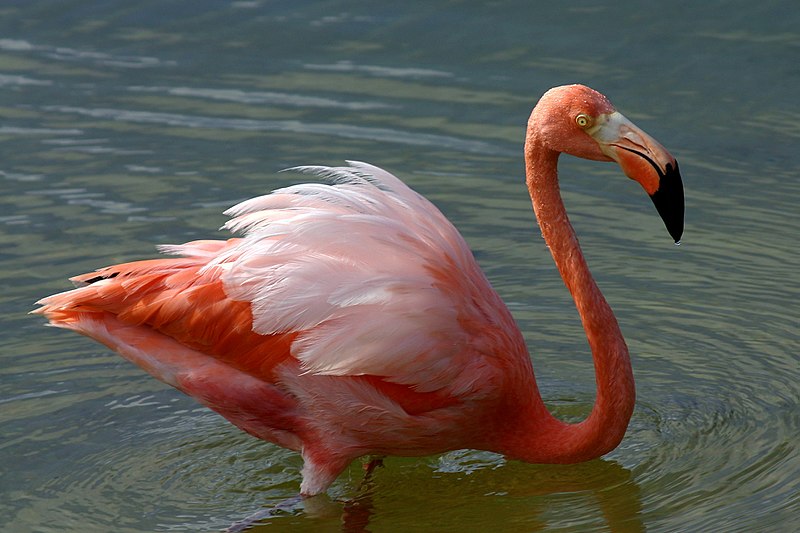
The American flamingo is a large species of bird found in the Neotropics. It has bright pink feathers and long legs, making it easily distinguishable from other species of flamingos.
The diet consists mostly of shrimp and small fish but they are also known to eat algae, aquatic insects, mollusks, crustaceans and seeds.
They live around coastal lagoons or salt ponds in colonies with thousands of birds nesting together on mud flats.
Flamingos build nests out of sticks that sit atop their feet as they wade through shallow waters looking for food during low tide periods when these areas become more accessible for feeding purposes.
These birds have an interesting courtship ritual involving neck stretching which looks like a dance to attract mates before breeding season begins in May-June each year leading to chicks hatching during July-August time period.
Scientific classification:
| Kingdom | Animalia |
| Phylum | Chordata |
| Class | Aves |
| Order | Phoenicopteriformes |
| Family | Phoenicopteridae |
| Genus | Phoenicopterus |
| Species | P. ruber |
3. Venezuelan Flowerpiercer
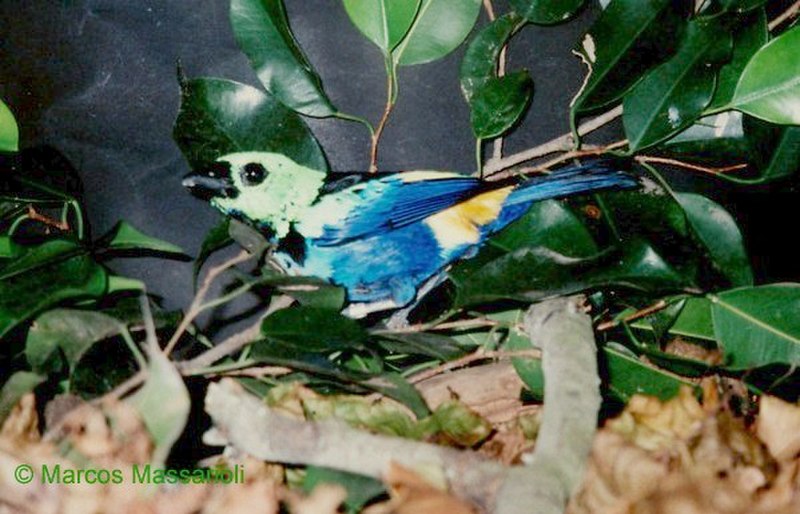
The Venezuelan flowerpiercer is a species of bird found only in Venezuela. It lives mainly in the northern subtropical and tropical moist montane forests, which are unfortunately being threatened by habitat loss.
To help protect this beautiful creature, it has been made a resident of Cueva del Guácharo National Park so that its population can be monitored and hopefully grow over time.
The Venezuelan flowerpiercer stands out with its bright plumage consisting of black wings accentuated by yellow patches on their shoulders as well as streaks of white across the chest and belly.
These birds prefer to stay close to home rather than migrate elsewhere due to their dependence on fruit for sustenance; however, they may travel short distances if food sources become scarce or during breeding season when males will attract mates through song duets with females.
Scientific classification:
| Kingdom | Animalia |
| Phylum | Chordata |
| Class | Aves |
| Order | Passeriformes |
| Family | Thraupidae |
| Genus | Diglossa |
| Species | D. venezuelensis |
4. Táchira Antpitta
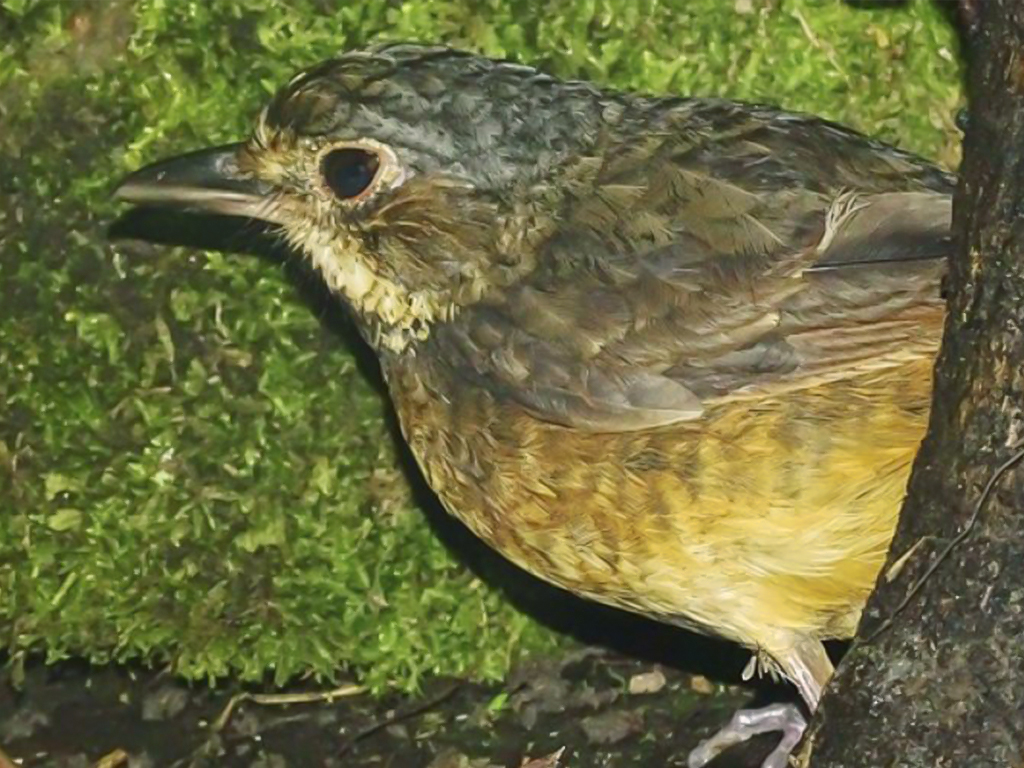
The Táchira antpitta is a species of bird in the Grallariidae family that was rediscovered in 2016 after being thought to be possibly extinct for 60 years.
This cryptic species reaches 17 cm and has brownish upperparts, with its crown and nape appearing darker than the rest of its body.
It also features white superciliums that contrast sharply against its dark facial markings, along with grey underparts featuring an orange tinge on the throat area.
The male’s breast bears some black spots while their wings have two pale bars which are more noticeable when they fly. They inhabit montane forests between 1,800-2,200 metres above sea level where they feed primarily on insects found among leaf litter or low vegetation.
Scientific classification:
| Kingdom | Animalia |
| Phylum | Chordata |
| Class | Aves |
| Order | Passeriformes |
| Family | Grallariidae |
| Genus | Grallaria |
| Species | G. chthonia |
5. Guaiquinima Whitestart
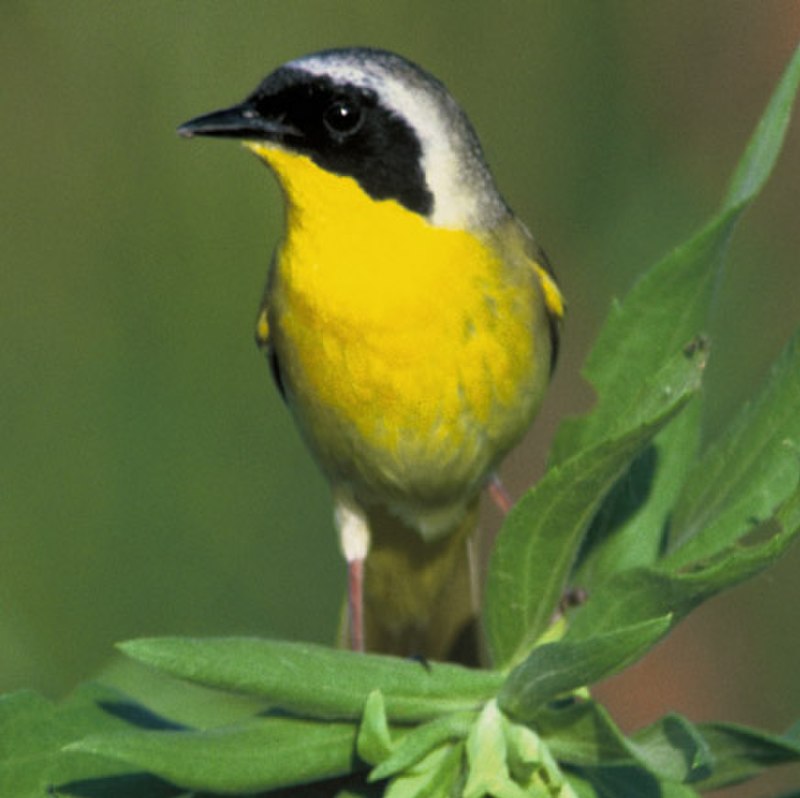
The Guaiquinima whitestart is a species of bird native to the humid highland forests on Cerro Guaiquinima, located in south-eastern Venezuela. Its other common names include the saffron-breasted redstart and saffron-breasted whitestart due to its distinctive colouration.
It has an overall yellowish plumage with white underparts and bright orange legs and beak. Unfortunately this beautiful species is threatened by habitat loss as its limited range makes it vulnerable to destruction or fragmentation caused by human activities such deforestation or pollution which can lead to population declines.
Protection measures are needed if we wish for future generations of humans and birds alike, to enjoy these stunning creatures that call Cerro Guaiquinima home.
Scientific classification:
| Kingdom | Animalia |
| Phylum | Chordata |
| Class | Aves |
| Order | Passeriformes |
| Family | Parulidae |
| Genus | Myioborus |
| Species | M. cardonai |
6. Urich’s Tyrannulet
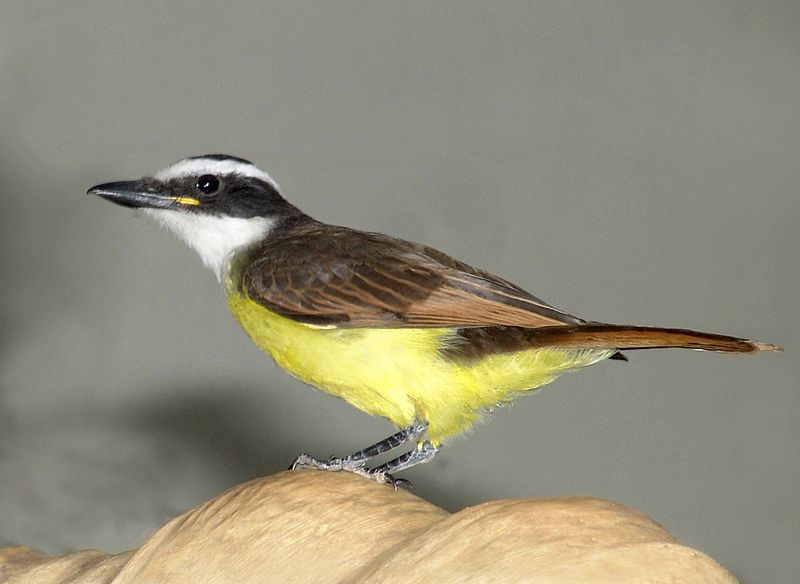
Urich’s tyrannulet is a rare species of bird found only in Venezuela. Endemic to the region, it inhabits subtropical or tropical montane forests and has been threatened by habitat loss for some time.
Previously thought extinct due to its rarity, sightings of this small flycatcher have occurred three times since 1899 – most recently in 2005 during an expedition to rediscover the species.
It measures around 11 cm long with yellow-green upperparts and grey throat; their wings are blackish-brown edged with white spots on the tips of feathers.
Urich’s Tyrannulets often hunt insects from low perches among vegetation as well as hawking them while flying between trees and shrubs. Conservation efforts must be made now if we wish to preserve this unique Venezuelan endemic.
Scientific classification:
| Kingdom | Animalia |
| Phylum | Chordata |
| Class | Aves |
| Order | Passeriformes |
| Family | Tyrannidae |
| Genus | Phyllomyias |
| Species | P. urichi |
7. Vermilion Cardinal
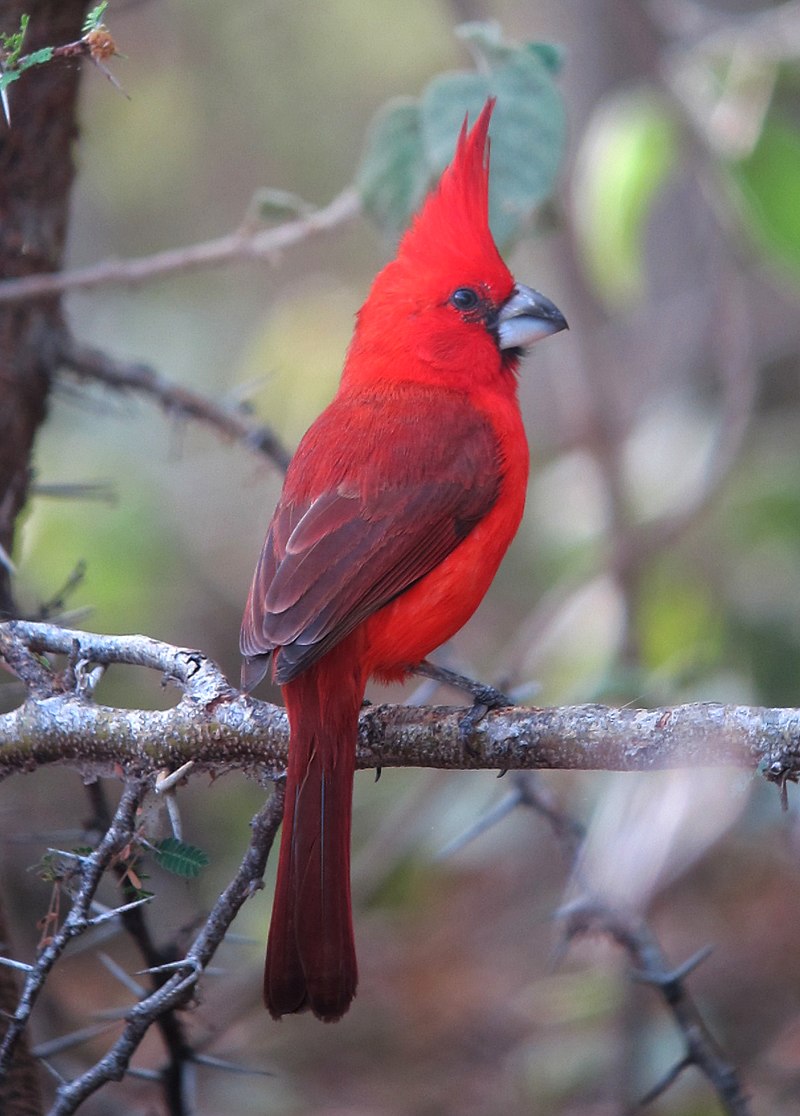
The Vermilion Cardinal is a species of bird that belongs to the family Cardinalidae, also known as cardinals or cardinal grosbeaks. This beautiful bird can be found in Colombia and Venezuela and is the only one of its kind.
It was previously placed in two other genera – Richmondena and Pyrrhuloxia- however it has since been established that it is more closely related to the latter.
The Vermillion Cardinals have a stunning plumage with vibrant red feathers on the head, wings, back and tail combined with black accents across their body which gives them an eye catching look.
Their diet consists mainly of insects but they are also known to feed on seeds when available too. These birds make lovely pets due to their intelligence but should be kept away from potential predators such as cats or hawks while out exploring outside.
Scientific classification:
| Kingdom | Animalia |
| Phylum | Chordata |
| Class | Aves |
| Order | Passeriformes |
| Family | Cardinalidae |
| Genus | Cardinalis |
| Species | C. phoeniceus |
Also Featured In: Common Margarita Island Birds,
8. Grey-Winged Trumpeter
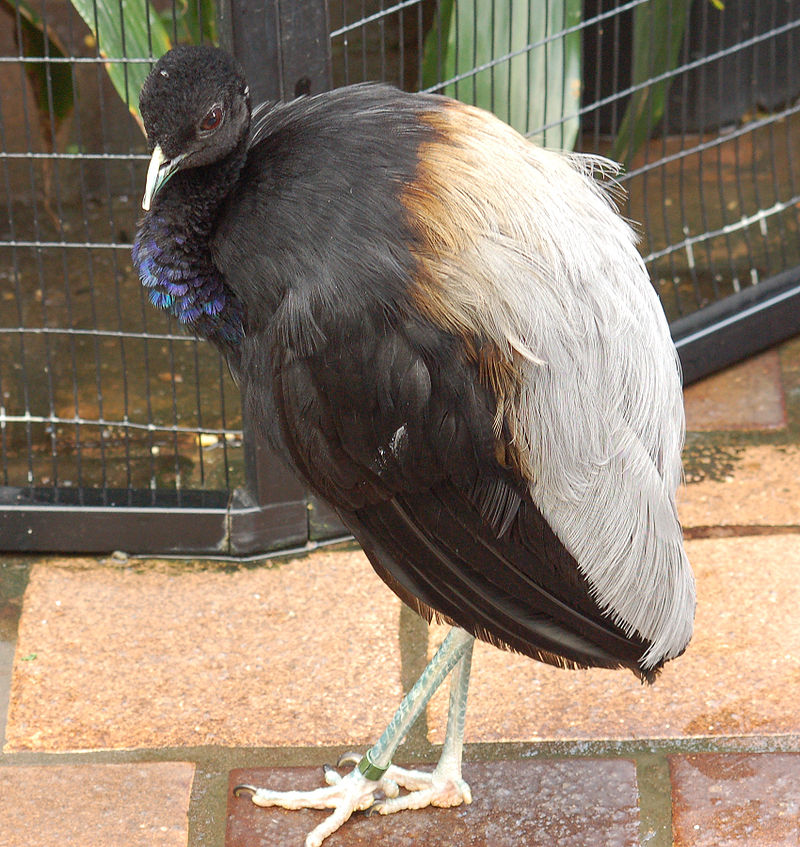
The Grey-winged Trumpeter is a species of bird found in South America, spanning Brazil, Colombia, Ecuador and several other countries.
It belongs to the small family Psophiidae and has an uncertain taxonomy; this is being studied by various organisations such as the International Ornithological Committee (IOC).
They are usually around 35 cm long with grey wings and brown eyes. This species typically lives in humid lowland forests or adjacent woodlands.
Its diet consists mainly of fruits, seeds and some invertebrates which it finds on the ground or near trees.
The mating season for these birds occurs from October to February when they build nests made out of twigs lined with leaves close to their food sources for protection against potential predators.
Although not currently threatened due to its wide range distribution across multiple countries there may be localised threats that need monitoring in order for them survive into future generations.
Scientific classification:
| Kingdom | Animalia |
| Phylum | Chordata |
| Class | Aves |
| Order | Gruiformes |
| Family | Psophiidae |
| Genus | Psophia |
| Species | P. crepitans |
9. Double-Striped Thick-Knee
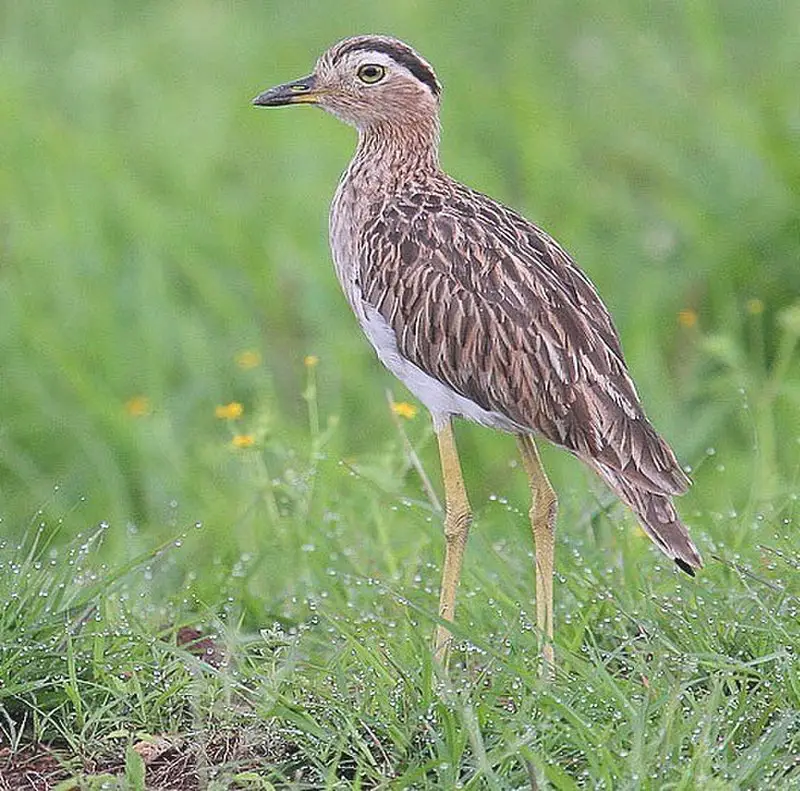
The double-striped thick-knee is a species of stone curlew, belonging to the family Burhinidae. It has long legs with prominent joints and two stripes on its head pattern that give it its name ‘bistriatus’.
This bird was first described in 1829 by Johann Georg Wagler from a specimen found in Mexico.
Its plumage varies between shades of grey and brown depending on the season, allowing for camouflage when perching or nesting amongst rocks or shrubs.
Double striped thick knees are usually seen alone or in pairs but during breeding season they may gather together into small flocks.
They feed mainly on insects such as locusts, crickets and grasshoppers which they catch using their strong beak after running around like chickens.
Scientific classification:
| Kingdom | Animalia |
| Phylum | Chordata |
| Class | Aves |
| Order | Charadriiformes |
| Family | Burhinidae |
| Genus | Burhinus |
| Species | B. bistriatus |
Also Featured In: Birds That You’ll Find in Hispaniola,
10. Handsome Fruiteater
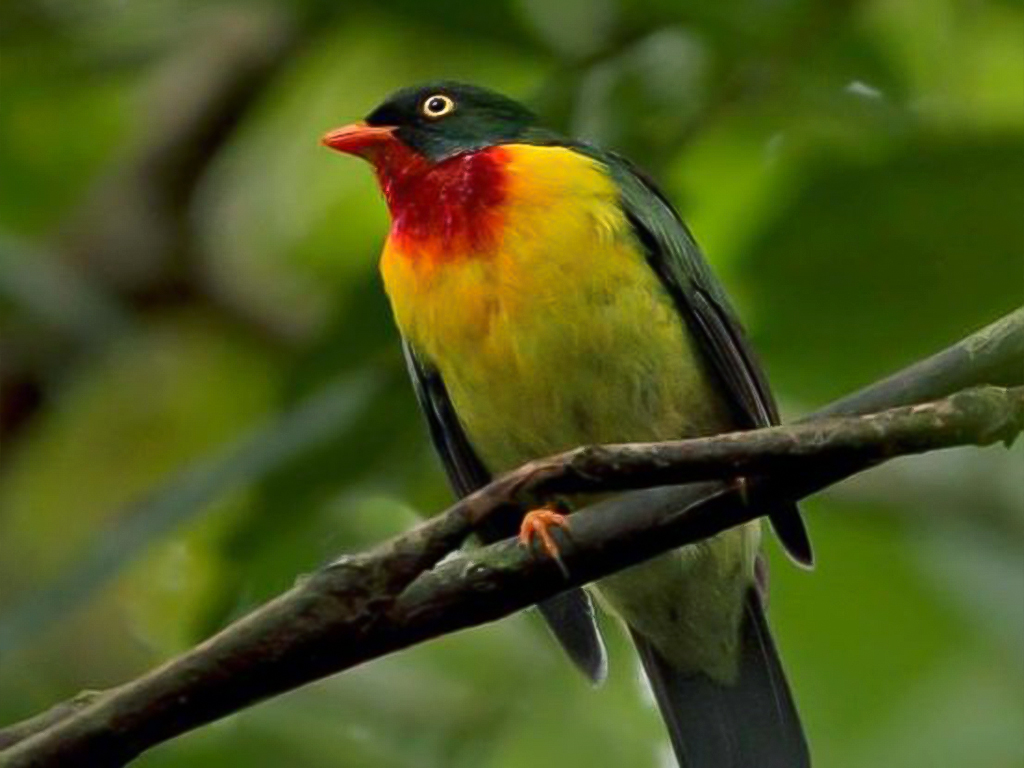
The Handsome Fruiteater is a species of bird found in the coastal mountains of northern Venezuela. This stunning creature is characterized by its black head, throat and green upper parts.
It has two populations living 400 km apart from each other in mountainous regions with subtropical or tropical moist montane forests as their natural habitat. These birds feed mainly on fruits but also consume small insects for extra nutrition when available.
They are known to be quite shy around humans so it’s best to observe them quietly from afar if you spot one. The Handsome Fruiteater plays an important role in maintaining healthy forest ecosystems through dispersing seeds which help new plants grow throughout the area they inhabit.
Scientific classification:
| Kingdom | Animalia |
| Phylum | Chordata |
| Class | Aves |
| Order | Passeriformes |
| Family | Cotingidae |
| Genus | Pipreola |
| Species | P. formosa |
11. White-Throated Barbtail
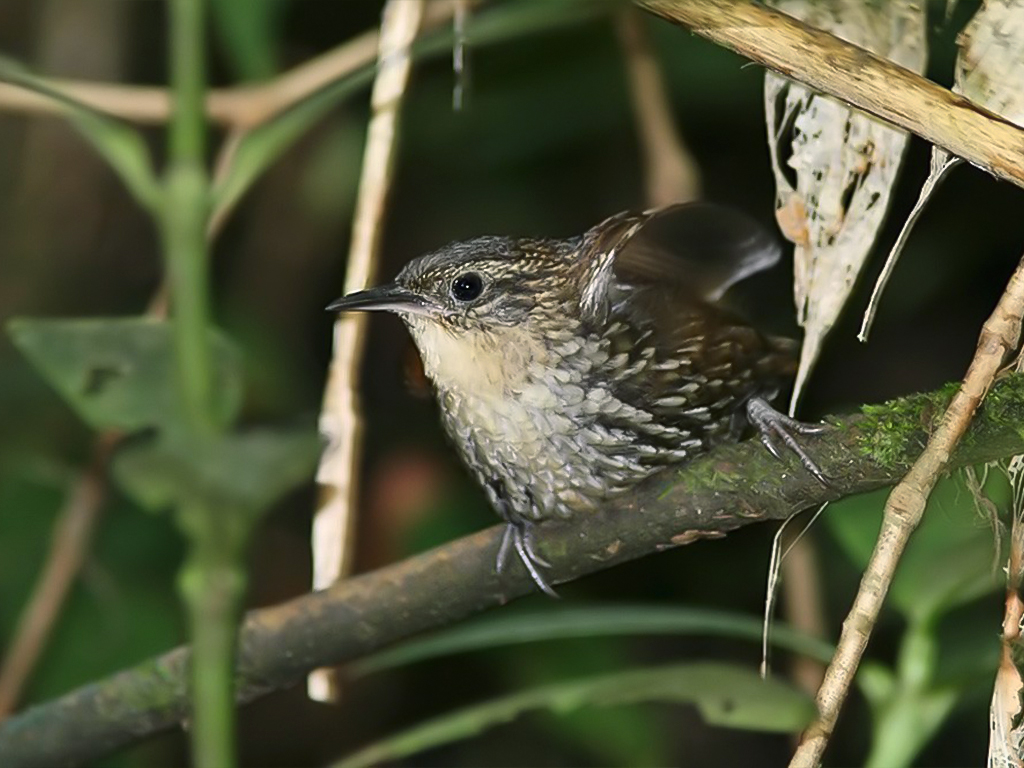
The White-throated Barbtail is a species of bird found in Venezuela and belonging to the Furnariidae family. It has a white throat, with olive upperparts and paler underparts.
The head is greyish brown, while its tail feathers are black tipped with white.
Its natural habitat consists of subtropical or tropical moist montane forests which it needs for nesting and food sources like insects; however, this environment faces threats from deforestation that could lead to their endangerment in the near future if not addressed soon enough.
This small bird can be seen flying between trees as well as perching on branches during daylight hours searching for food, making them an interesting addition to any outdoor adventure.
Scientific classification:
| Kingdom | Animalia |
| Phylum | Chordata |
| Class | Aves |
| Order | Passeriformes |
| Family | Furnariidae |
| Genus | Premnoplex |
| Species | P. tatei |
12. Yellow-Shouldered Amazon
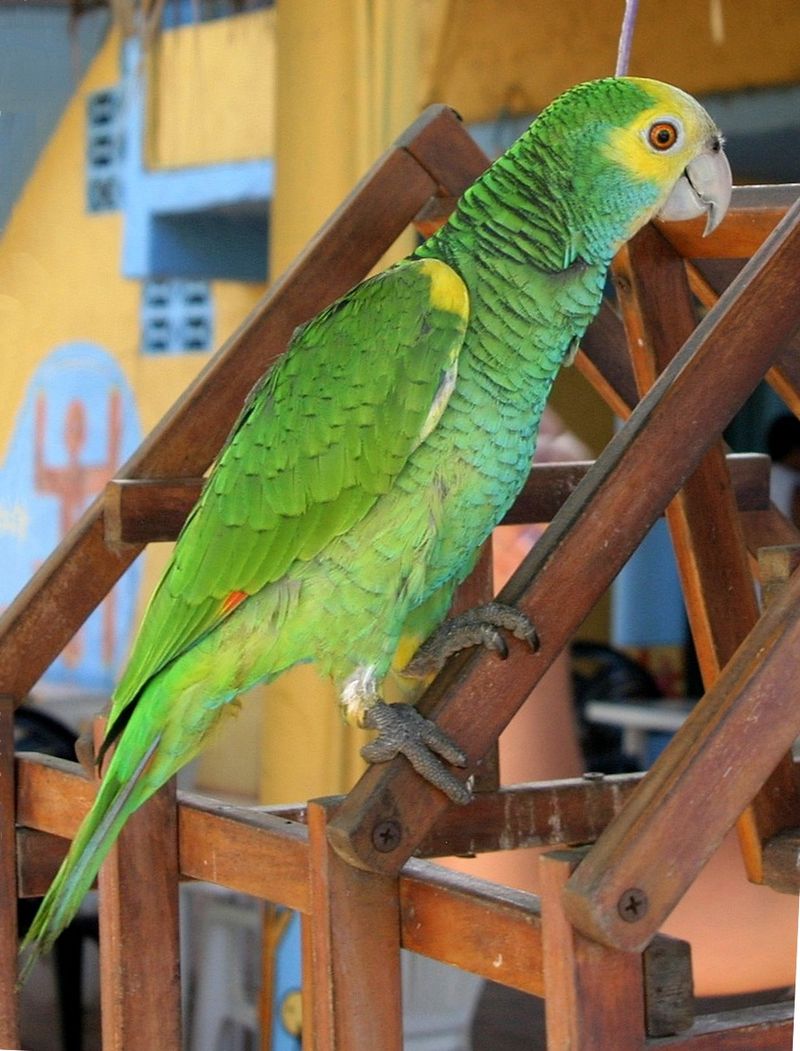
The Yellow-shouldered Amazon is a beautiful and unique bird species that can be found in South America and the Caribbean. As a member of the Psittacidae family, this bird is related to parrots and is a popular species among bird enthusiasts.
The bird has distinct physical features, including a whitish forehead, yellow crown, and ear coverts, a unique white eye-ring, and yellow thighs and bend of wings.
The bird’s primary flight feathers have broad dark blue tips, and a red wing-speculum, which makes it easy to identify. The species is mainly green, with a bluish tinge on its throat, cheeks, and belly, which gives it a beautiful appearance.
The Yellow-shouldered Amazon is known for its vocalizations and can be distinguished from other species by its unique physical features. Its diet consists of fruits, nuts, seeds, and berries, which are found in a range of habitats, including forests, savannas, and scrublands.
The species forms strong pair bonds and may mate for life. It typically lays 2-4 eggs in a clutch and incubates them for about a month. This bird’s breeding habits are vital to its survival as a species, and conservation efforts are underway to protect and preserve the Yellow-shouldered Amazon and its habitat.
Unfortunately, the Yellow-shouldered Amazon is currently classified as vulnerable due to habitat loss and poaching. These factors threaten the bird’s survival, making it crucial to implement conservation measures to protect its population.
The Yellow-shouldered Amazon is a unique and beautiful bird species found in South America and the Caribbean. Its physical features, vocalizations, and breeding habits make it a prized species among bird enthusiasts.
However, its vulnerability to habitat loss and poaching means that conservation efforts must continue to protect this species and ensure its survival for future generations.
Scientific classification:
| Kingdom | Animalia |
| Phylum | Chordata |
| Class | Aves |
| Order | Psittaciformes |
| Family | Psittacidae |
| Genus | Amazona |
| Species | A. barbadensis |
13. Carrizal Seedeater
The Carrizal seedeater is a species of bird in the cardinal family. It can be found only in Venezuela, where it was discovered by scientists Miguel Lentino and Robin L.
Restall in 2001 through three specimens collected from its native habitat. The Carrizal seedeater has bright blue feathers with some white patches on the wings and tail that give it an unmistakable look.
Its diet consists mainly of small seeds, which are usually consumed during short foraging trips away from its nest or roosting area.
As a shy but hardy species, this unique bird prefers to remain hidden among dense vegetation while searching for food sources as well as avoiding potential predators such as raptors or cats..
Despite being rarely seen outside of their natural habitats due to their secretive nature, they are considered one of Venezuela’s most iconic birds thanks to their striking coloration and distinctive call that carries across vast distances.
Scientific classification:
| Kingdom | Animalia |
| Phylum | Chordata |
| Class | Aves |
| Order | Passeriformes |
| Family | Cardinalidae |
| Genus | Amaurospiza |
| Species | A. carrizalensis |
14. Rusty-Flanked Crake
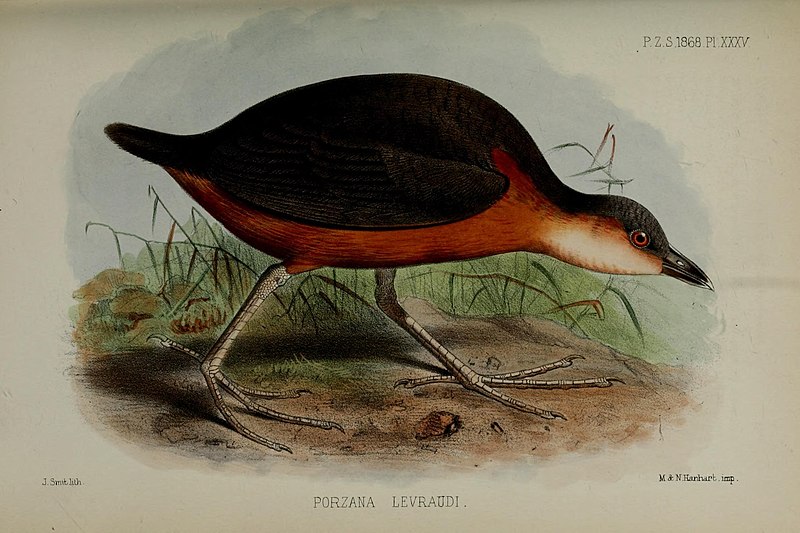
The Rusty-flanked Crake is a Vulnerable species of bird in the Rallinae subfamily and is endemic to Venezuela. It measures between 14 and 16.5 cm in length, with its distinctive rusty red flank feathers setting it apart from other birds.
Its diet consists mainly of insects and small invertebrates, which it searches for on the ground or wades through shallow water while hunting alongside slow streams or rice paddies.
The conservation status of this species remains poor due to threats such as habitat destruction caused by deforestation and increased agricultural activities around their natural habitats.
Although some initiatives have been taken recently to protect them, more needs to be done if we want these beautiful creatures continue gracing our skies.
Scientific classification:
| Kingdom | Animalia |
| Phylum | Chordata |
| Class | Aves |
| Order | Gruiformes |
| Family | Rallidae |
| Genus | Laterallus |
| Species | L. levraudi |
15. Duida Grass Finch
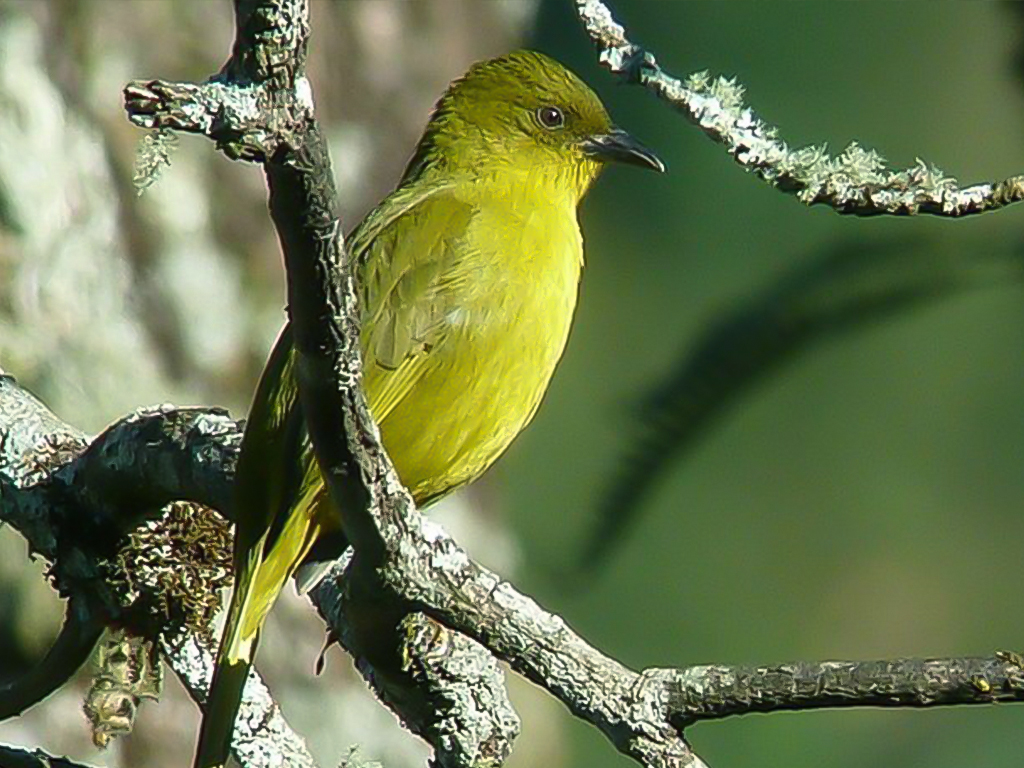
The Duida grass finch is a species of bird belonging to the family Thraupidae and is endemic to Cerro Duida, a mountain in Venezuela. It was first discovered by scientists in 1928 and 1929 but it has since been assumed that its population remains stable due to its location being so remote.
Its natural habitat consists of dry savanna and nothing else has been reported about this bird’s behavior or diet yet.
The most striking feature about the Duida grass finch are its beautiful yellow feathers which give it an elegant appearance against the earthy green backdrop of their home terrain.
Overall, they remain one of nature’s hidden gems with very little information existing on them as well as few sightings having ever occurred.
Scientific classification:
| Kingdom | Animalia |
| Phylum | Chordata |
| Class | Aves |
| Order | Passeriformes |
| Family | Thraupidae |
| Genus | Emberizoides |
| Species | E. duidae |
16. White-Faced Whitestart
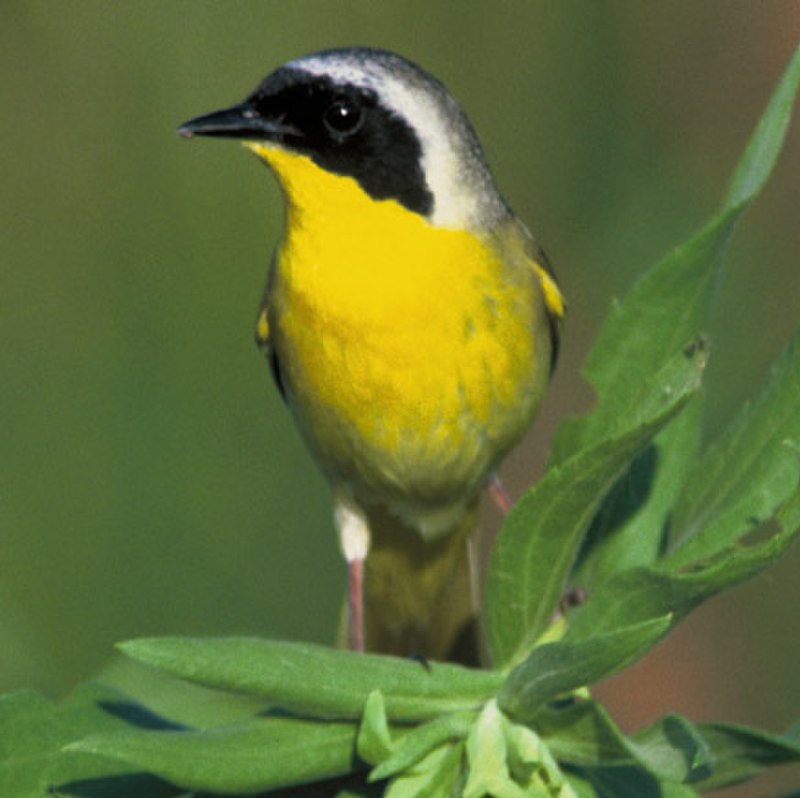
The White-faced Whitestart is a unique species of bird belonging to the Parulidae family. It can only be found in humid highland forests located on tepuis in south-western Venezuela, making it quite rare and isolated from other birds.
Its plumage consists of white facial markings, bright reddish upperparts with dark wings, and yellow underparts which gives it its name – ‘Whitestart’.
Although little research has been done on this species due to its rarity, what we do know about them indicates that they are active foragers both during day and night time hours as well as being highly vocal when communicating with each other throughout their range.
All these features make the White-faced Whitestart an interesting yet elusive bird worth further study.
Scientific classification:
| Kingdom | Animalia |
| Phylum | Chordata |
| Class | Aves |
| Order | Passeriformes |
| Family | Parulidae |
| Genus | Myioborus |
| Species | M. albifacies |
17. White-Fronted Whitestart
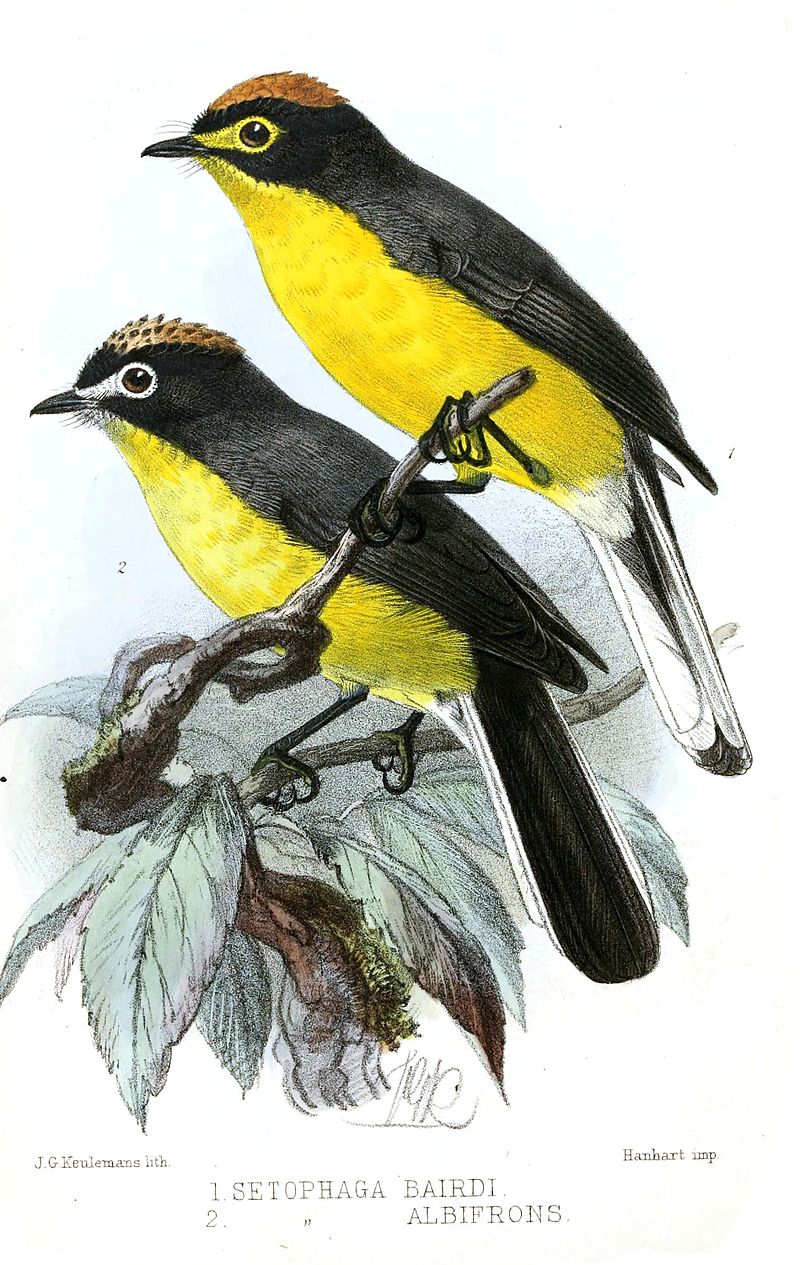
The White-fronted whitestart, also known as the white-fronted redstart, is an endemic bird species of South America. This beautiful songbird lives in forests and woodlands found in western Venezuela’s Andes mountain range.
Its plumage is a mix of grey with distinctive white on its forehead, wings and tail making it easily recognizable. It mainly feeds on insects such as flies and beetles but will occasionally consume small fruits too.
Unfortunately due to deforestation this species has become threatened which puts it at risk of extinction if conservation efforts are not put in place soon to protect their habitat from destruction or degradation.
Conservationists are calling for stricter regulations when it comes to logging activities within these areas so that we can save this amazing creature before its too late.
Scientific classification:
| Kingdom | Animalia |
| Phylum | Chordata |
| Class | Aves |
| Order | Passeriformes |
| Family | Parulidae |
| Genus | Myioborus |
| Species | M. albifrons |
18. Black-Throated Spinetail
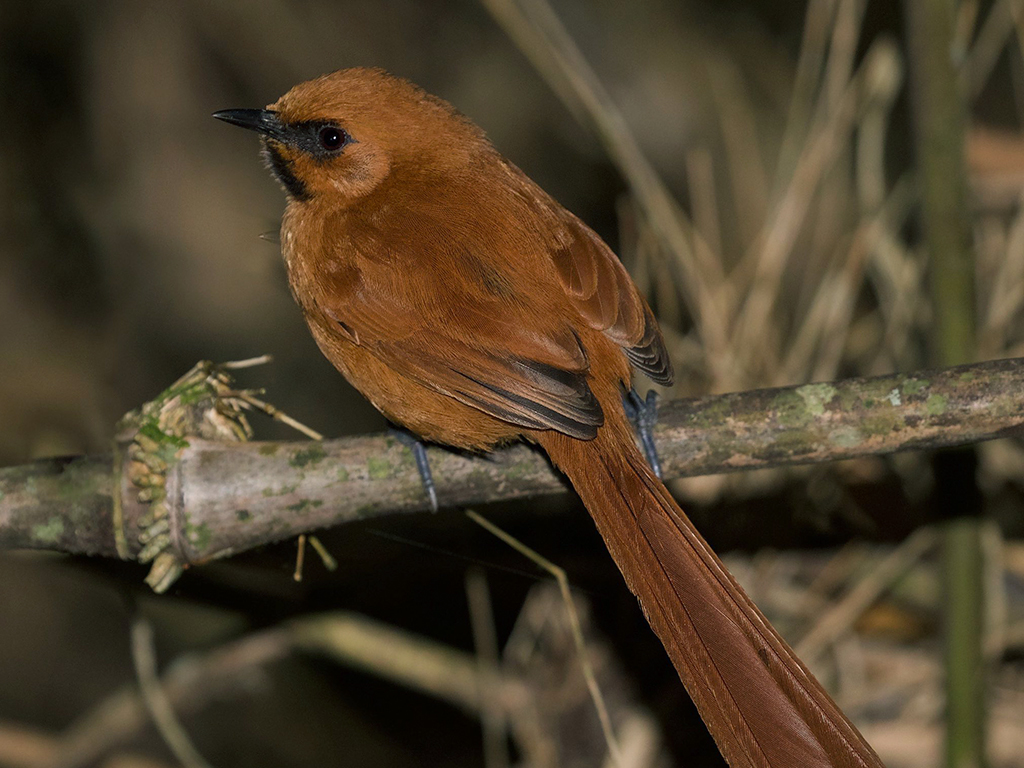
The Black-throated spinetail is a species of bird found in the Venezuelan Coastal Range. It prefers to live in subtropical or tropical moist montane forests, as well as heavily degraded former forest regions.
This small bird has an olive-brown head with a black throat and chestnut coloring on its back and wings. Its tail is stiffly cocked, giving it its name “spinetail”. In regards to feeding habits, they are omnivorous creatures that eat both insects and fruits depending on what’s available seasonally.
They can also be seen foraging alone or in pairs along tree branches within their habitat range searching for food items such as larvae hidden inside dead wood bark crevices during autumn months.
Though not currently threatened by extinction, these birds face some threats from deforestation due to human activity which may lead them into further decline if action isn’t taken soon.
Scientific classification:
| Kingdom | Animalia |
| Phylum | Chordata |
| Class | Aves |
| Order | Passeriformes |
| Family | Furnariidae |
| Genus | Synallaxis |
| Species | S. castanea |
19. Orinoco Softtail
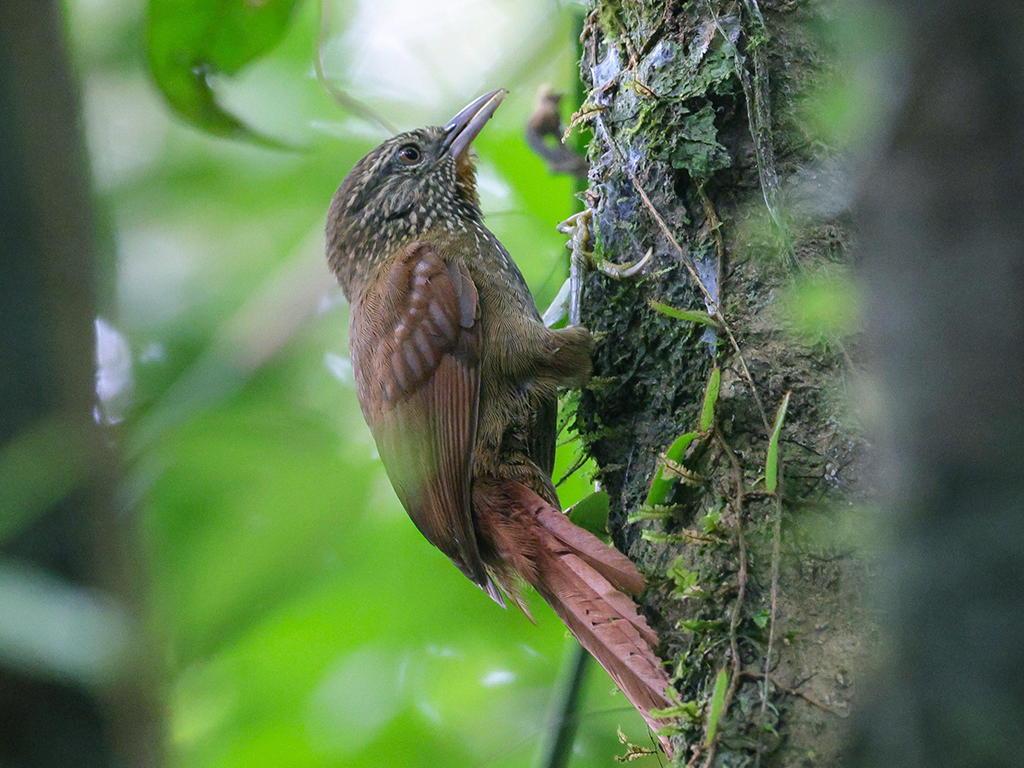
The Orinoco Softtail is a species of bird endemic to the state of Amazonas in southwestern Venezuela. It inhabits riparian tropical moist lowland forests, specifically várzea forest at around 100 meters above sea level.
Its dark plumage and pale eye ring make it an easily recognizable creature within its natural habitat. Although not yet confirmed as occurring away from the type locality along the Río Capuana, this small songbird will be sure to please any avid birder lucky enough to spot one.
As with many other bird species living in these areas, they are likely threatened due to deforestation and human encroachment on their habitats.
Scientific classification:
| Kingdom | Animalia |
| Phylum | Chordata |
| Class | Aves |
| Order | Passeriformes |
| Family | Furnariidae |
| Genus | Thripophaga |
| Species | T. cherriei |
20. Copper-Rumped Hummingbird
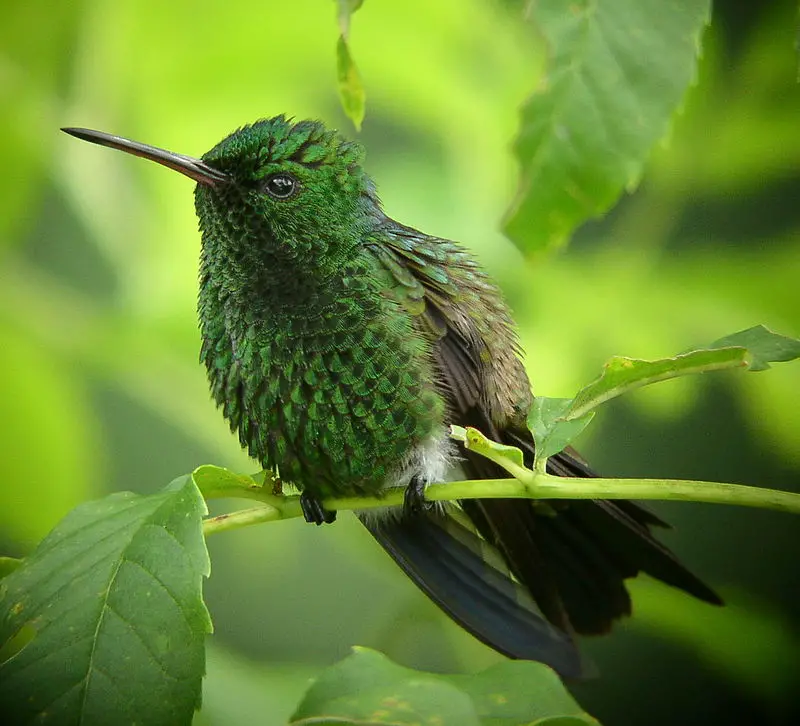
The Copper-rumped Hummingbird is a stunning species of hummingbird found in Tobago, Trinidad, Venezuela and potentially Grenada.
It was first described by German naturalist Johann Friedrich Gmelin in 1788 as part of his revised edition to the Systema Naturae created by Carl Linnaeus.
This small bird has an emerald green head with a copper rump patch on its back that gives it its name.
Its wings are mainly black with metallic blue feathers near their tips while its tail consists of white outer rectrices tipped with grayish brown and central ones being mostly grayish brown colored.
The male also possesses bright orange gorget feathers which helps distinguish itself from other birds during mating season.
Despite its size this remarkable species can fly up to 25 mph making them one of nature’s wonders.
Scientific classification:
| Kingdom | Animalia |
| Phylum | Chordata |
| Class | Aves |
| Order | Apodiformes |
| Family | Trochilidae |
| Genus | Saucerottia |
| Species | S. tobaci |
21. Red Siskin
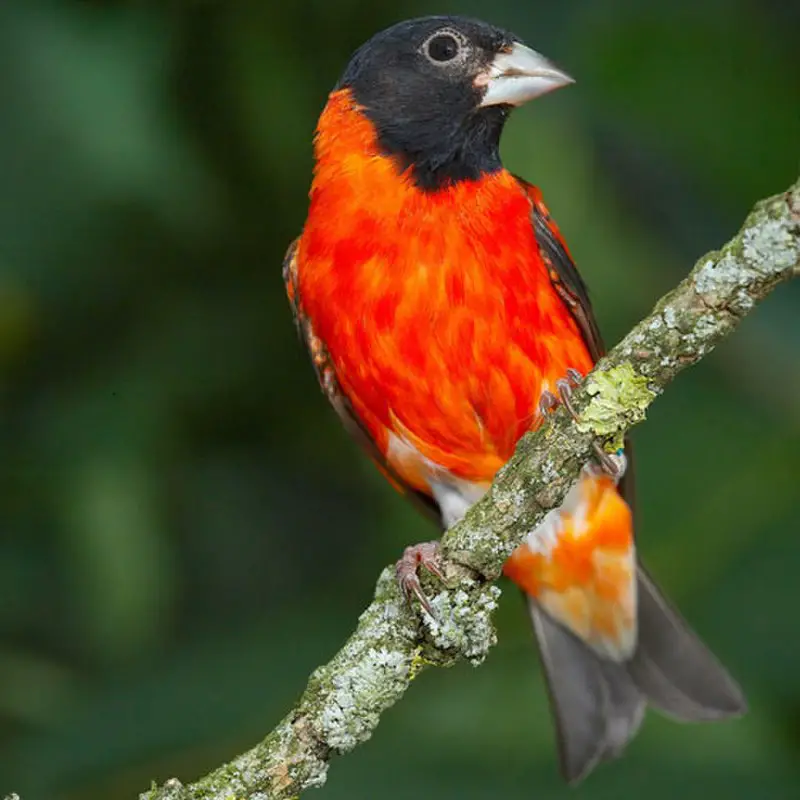
The Red Siskin is a vibrant and unique bird native to tropical South America. It has been found in northern Colombia, Venezuela (where it’s known as the “cardenalito”) and Guyana.
In the early 20th century, this species was plentiful throughout its range but due to human activity, it has become increasingly rare. Its population on Trinidad is likely extinct now.
The male red siskin sports bright orange-red feathers with black wings and tail while females are duller yellowish green overall with dark streaks along their head, back and chest area.
These birds feed primarily on seeds from grasses or small fruits such as mulberry or banana trees found near forests edges during migration season when they travel between countries in flocks of up to 15 individuals.
Scientific classification:
| Kingdom | Animalia |
| Phylum | Chordata |
| Class | Aves |
| Order | Passeriformes |
| Family | Fringillidae |
| Subfamily | Carduelinae |
| Genus | Spinus |
| Species | S. cucullatus |
22. Tropical Mockingbird
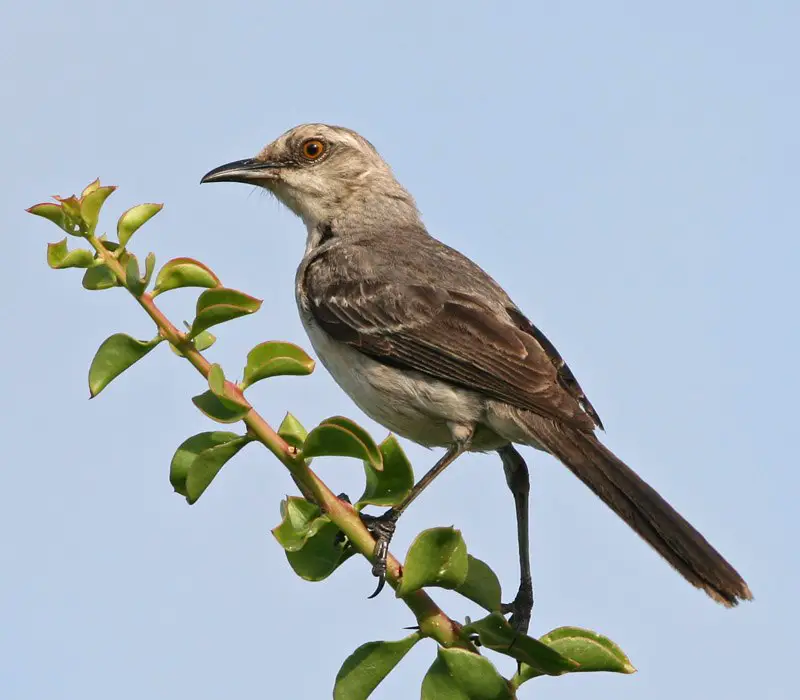
The Tropical mockingbird is a species of bird found throughout Central America and the Caribbean. It has been classified as a resident breeding bird, with its range stretching from southern Mexico to northern and eastern South America.
This species is closely related to the Northern Mockingbird, forming what is known as a superspecies between them both.
The Tropical mockingbird can be recognized by its grey-brown coloration on top, blending into white underparts which are highlighted by black spots along their throat and wings.
They have long legs for perching in trees or shrubs while searching for prey such as insects before singing out melodic songs during territorial disputes with other birds in the area.
Sadly, one subspecies -the San Cristobal Mockingbird – has been listed as critically endangered due to habitat destruction caused by human activities including logging within their natural environment.
Scientific classification:
| Kingdom | Animalia |
| Phylum | Chordata |
| Class | Aves |
| Order | Passeriformes |
| Family | Mimidae |
| Genus | Mimus |
| Species | M. gilvus |
23. Great Antpitta
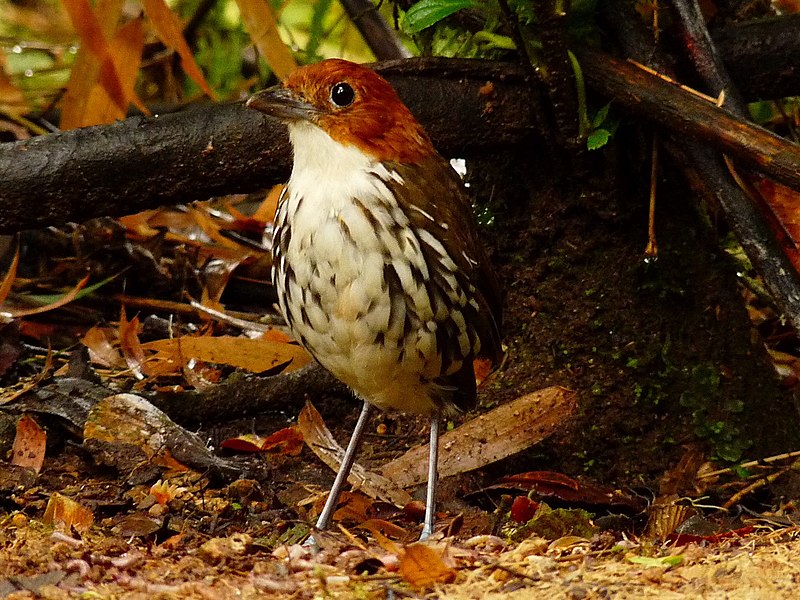
The great antpitta is a species of bird native to Venezuela. It belongs in the Grallariidae family and resides in subtropical or tropical moist montane forests.
Unfortunately, this species faces threats due to its natural habitat being destroyed by deforestation. These birds are medium-sized with blackish brown feathers on their back and tail as well as chestnut plumage along their wings, rump and upperparts of their head.
They have unique yellow eyes that stand out against the dark colors found across most of its body.
The great antpitta can be observed foraging on the ground looking for food such as insects, fruit, frogs and small lizards which it will eat when encountered during its search through leaf litter or among dense vegetation near streams within forested areas.
Scientific classification:
| Kingdom | Animalia |
| Phylum | Chordata |
| Class | Aves |
| Order | Passeriformes |
| Family | Grallariidae |
| Genus | Grallaria |
| Species | G. excelsa |
24. Venezuelan Sylph
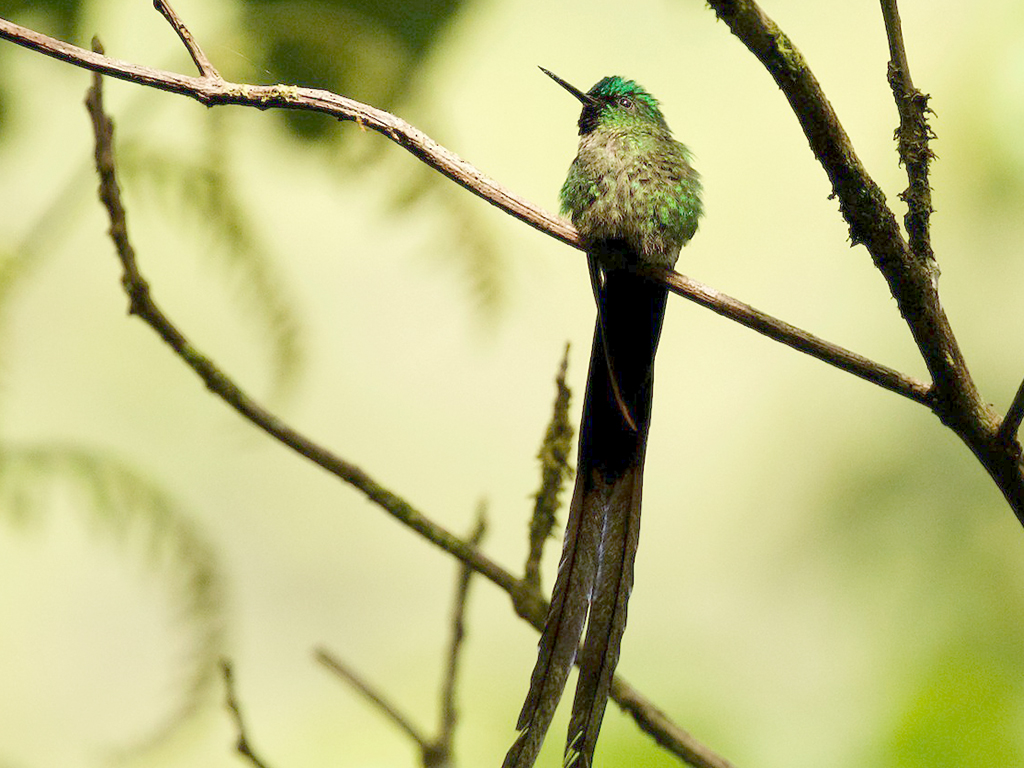
The Venezuelan Sylph is a species of hummingbird, belonging to the “coquettes” tribe and subfamily Lesbiinae.
Endangered in nature, this bird is found only within two small mountain ranges in northeastern Venezuela.
Its taxonomy has been complicated due to its close resemblance with other sylphs like the long-tailed and violet-tailed varieties.
It displays a striking plumage featuring metallic green upperparts while being white underneath along with some rufous streaks on its wings and tail feathers.
Usually seen alone or pairs around forest edges as well as wet meadows at higher altitudes near cloud forests, it feeds mainly on nectar from flowers but may also take insects for protein when available.
This beautiful creature must be protected at all costs if we are to save them from extinction.
Scientific classification:
| Kingdom | Animalia |
| Phylum | Chordata |
| Class | Aves |
| Order | Apodiformes |
| Family | Trochilidae |
| Genus | Aglaiocercus |
| Species | A. berlepschi |
25. Venezuelan Wood Quail
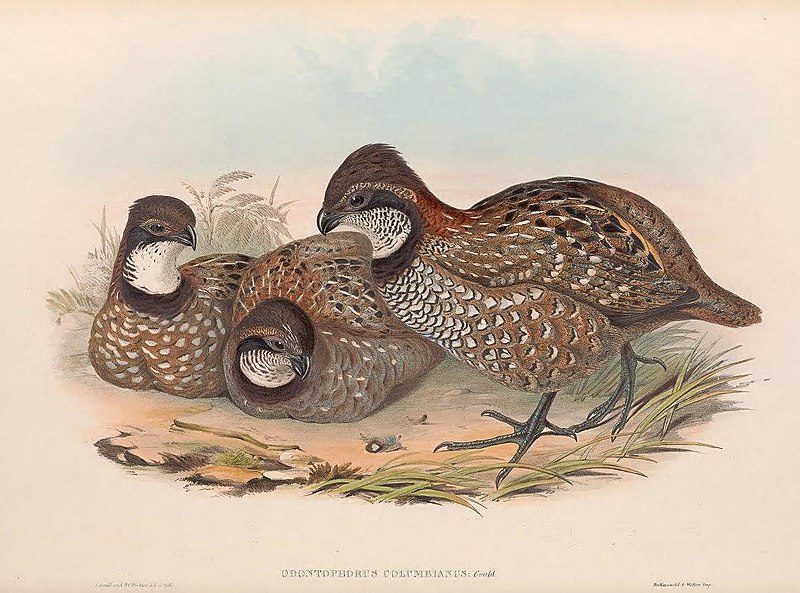
The Venezuelan wood quail is a small bird that belongs to the New World quail family. It has its home in the Venezuelan Coastal Range, and some have proposed it being related to four other species of Odontophoridae: gorgeted wood quail, Tacarcuna wood quail, black-fronted wood quaiL and black-breastedwoodquails.
This species has a reddish brown plumage on their head with white spots along their sides down to its flanks. The tail feathers are grey while underparts are chestnut coloured giving it an overall attractive look when seen from afar.
They feed mainly on seeds found in grasslands or cultivated fields close by which they obtain by walking around looking for food like most birds do.
These birds inhabit tropical evergreen forests located between 600 meters up until 1500meters allowing them ample space where they can move about freely without any disturbances from nearby animals or humans alike thus ensuring their safety at all times.
Scientific classification:
| Kingdom | Animalia |
| Phylum | Chordata |
| Class | Aves |
| Order | Galliformes |
| Family | Odontophoridae |
| Genus | Odontophorus |
| Species | O. columbianus |
26. Mérida Wren
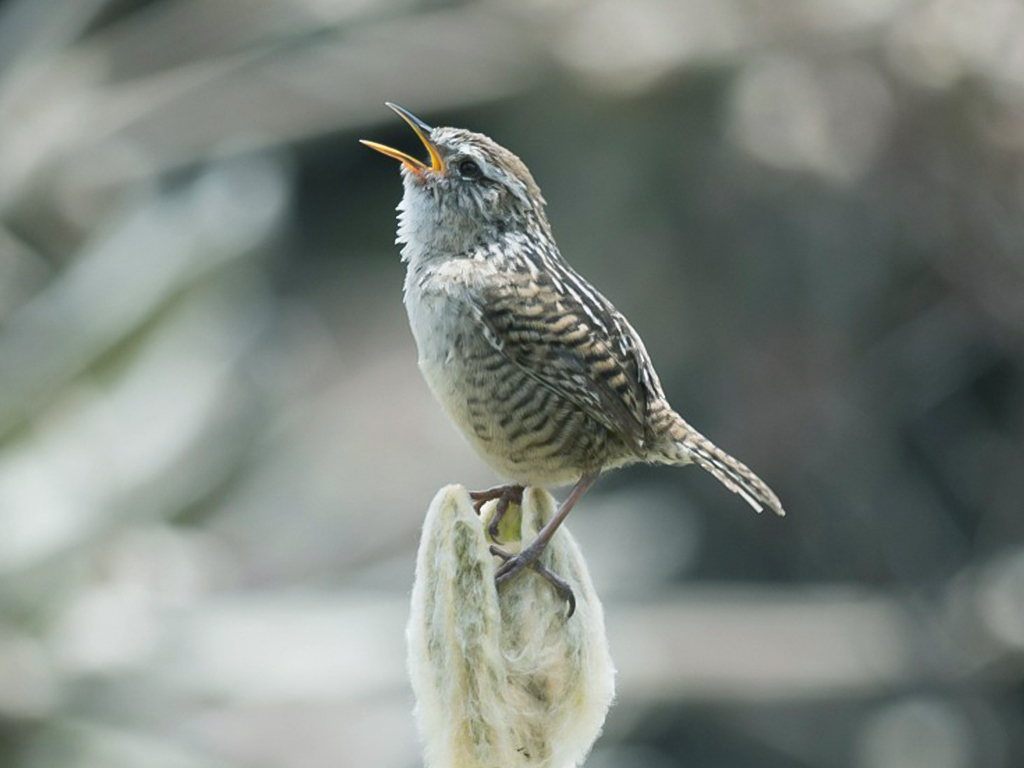
The Mérida wren is an endemic bird species found in Venezuela. It measures 10 cm (3.9 in) long, and has a medium brown crown with darker streaks on its nape as well as blackish-brown shoulders and undertail coverts.
This species is monotypic and forms part of a superspecies alongside Apolinar’s wren and grass wren.
The Mérida Wren feeds mainly on insects that it finds among the shrubs of its habitat while flying from one bush to another searching for food or shelter when disturbed by predators such as raptors or cats.
Breeding season begins between April–July where both parents are responsible for incubating eggs which hatch after 15 days into five chicks at most per nestling period.
These birds have adapted to live amongst humans making them vulnerable to predation through human activities like pet trade so conservation efforts must be taken seriously if we want our future generations to keep enjoying their beauty within nature’s canopy.
Scientific classification:
| Kingdom | Animalia |
| Phylum | Chordata |
| Class | Aves |
| Order | Passeriformes |
| Family | Troglodytidae |
| Genus | Cistothorus |
| Species | C. meridae |
27. Helmeted Curassow
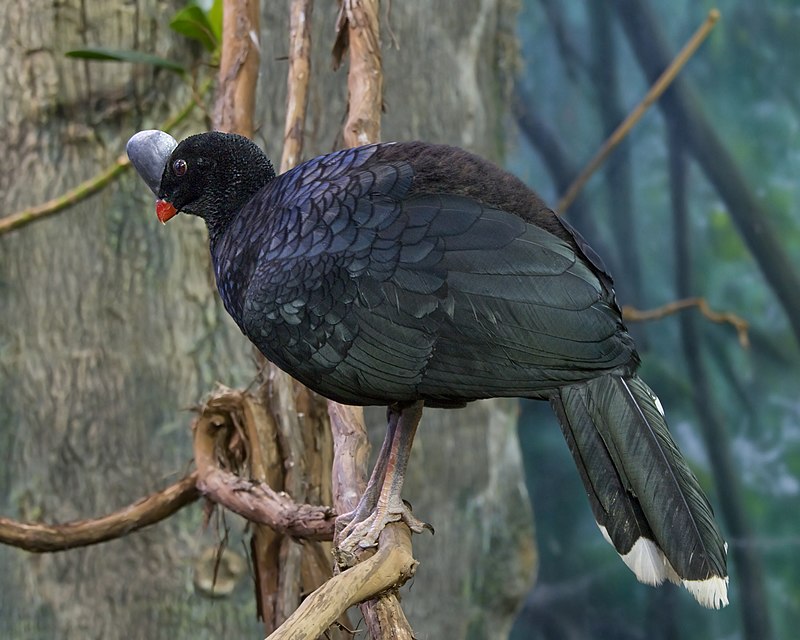
The Helmeted Curassow is a large and impressive bird native to the subtropical cloud-forests of western Venezuela and northern Colombia.
It has mostly black feathers, with a white tip on its tail and red bill, as well as a distinctive gray casque on its forehead.
The two subspecies are found in different mountain ranges. This species is threatened by habitat loss due to deforestation activities in their region; they also face threats from hunting for food or trade purposes.
Conservation actions such as land protection measures have been implemented in order to promote population recovery of this species but further efforts need to be made if we want them safe from extinction.
Scientific classification:
| Kingdom | Animalia |
| Phylum | Chordata |
| Class | Aves |
| Order | Galliformes |
| Family | Cracidae |
| Genus | Pauxi |
| Species | P. pauxi |
28. Harpy Eagle
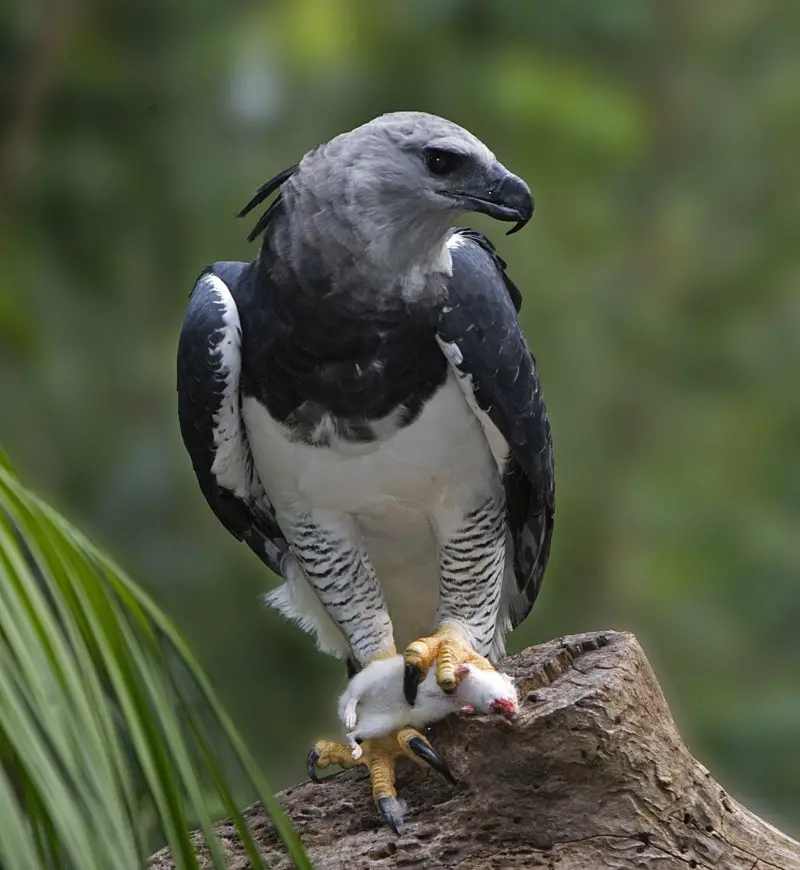
The Harpy Eagle is a magnificent bird of prey found in the tropical forests of Central and South America. It is the largest eagle on Earth, possessing an impressive wingspan that can reach up to 7 feet across.
Its powerful talons are its most distinguishing feature, being able to grasp even large animals such as monkeys or sloths with ease.
The majestic raptor has slate-gray feathers on its back and head which contrast against white undersides and yellow legs.
These birds live alone for much of their life but will come together during breeding season when they construct elaborate nests high off the ground in tall trees.
People have long been fascinated by this species’ impressive size and strength—it truly deserves its nickname as “the lord of skies”.
Scientific classification:
| Kingdom | Animalia |
| Phylum | Chordata |
| Class | Aves |
| Order | Accipitriformes |
| Family | Accipitridae |
| Subfamily | Harpiinae |
| Genus | Harpia Vieillot, 1816 |
| Species | H. harpyja |
29. Scarlet Ibis
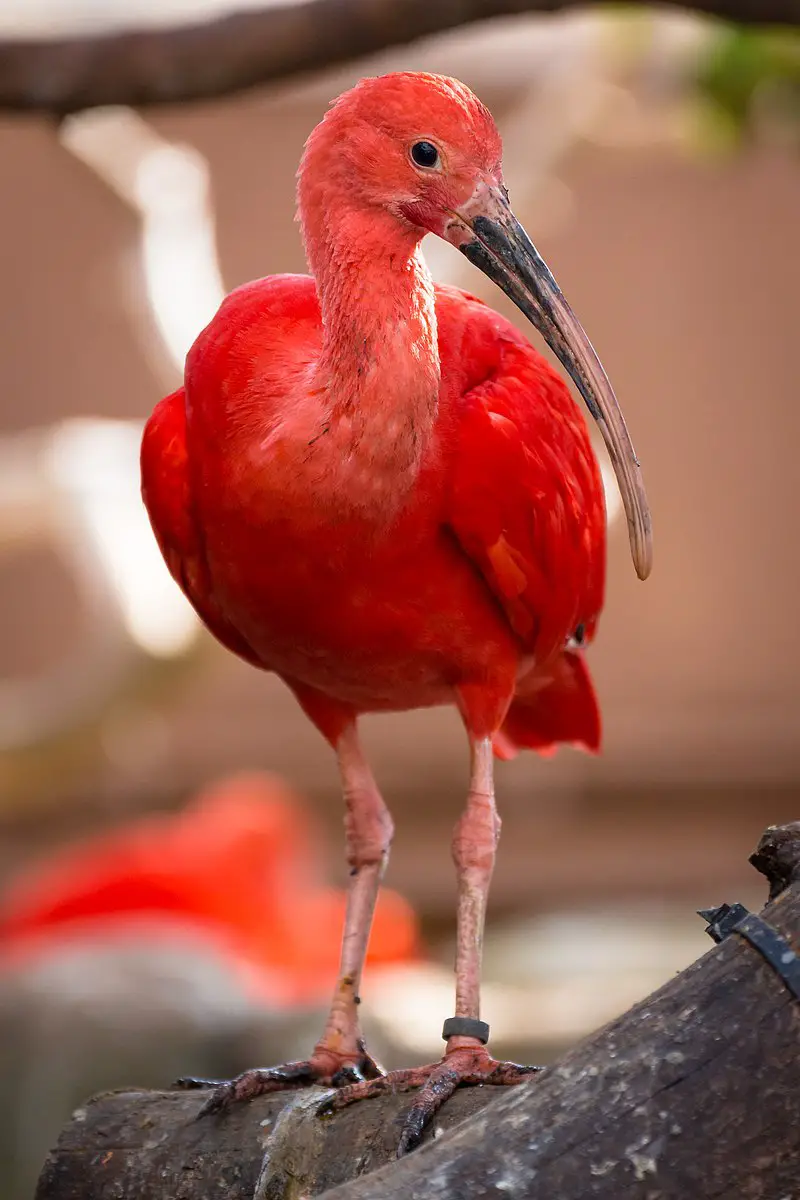
The Scarlet Ibis is a stunning bird, native to tropical South America and the Caribbean. With its distinctive scarlet coloration, it stands out from other ibises in the Threskiornithidae family.
It has become one of two national birds of Trinidad and Tobago with a Tupi-Guarani name: guará.
This species can grow up to 28 inches long with an impressive wingspan of 39–41 inches wide.
The striking red feathers are found mainly on their body while wings, head and neck range from white or greyish colors.
They have black legs with pink webbed feet that help them thrive as they wade through shallow water searching for food such as shrimp, crabs and small fish – all essential components to their diet.
Despite its beauty, this species faces threats due increasing habitat destruction caused by deforestation practices in areas where it lives making conservation efforts crucial for protecting these majestic creatures before they disappear forever.
Scientific classification:
| Kingdom | Animalia |
| Phylum | Chordata |
| Class | Aves |
| Order | Pelecaniformes |
| Family | Threskiornithidae |
| Genus | Eudocimus |
| Species | E. ruber |
30. Yellow-Crowned Amazon
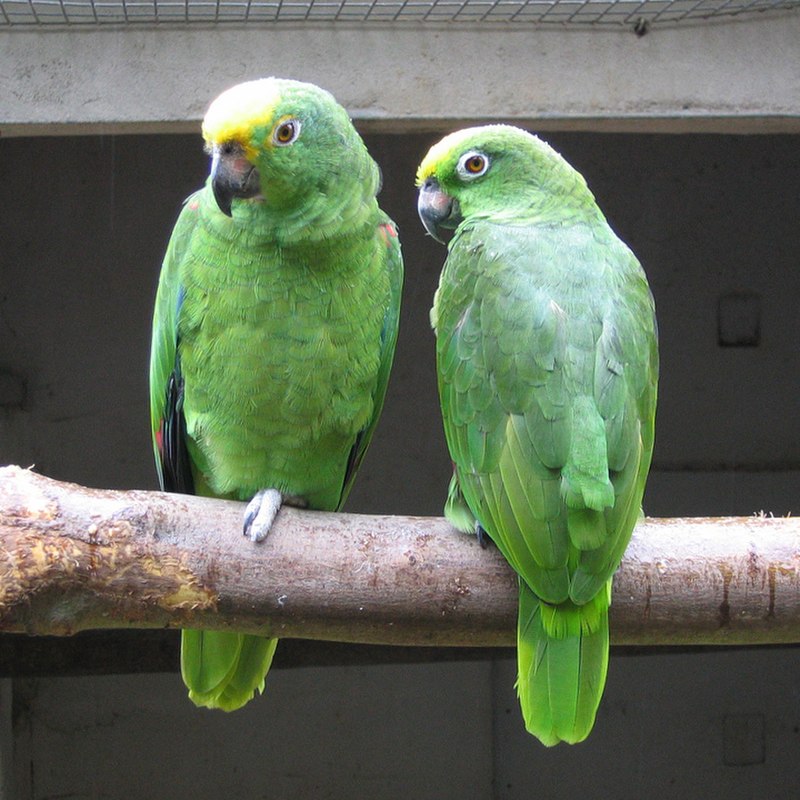
The Yellow-crowned Amazon is a vibrant parrot native to tropical South America, Panama and Trinidad & Tobago. It has an impressive yellow crown on its head, with green plumage covering the rest of its body.
The species displays considerable diversity in size and colouring across its range; some subspecies may even have red or blue markings in addition to their characteristic yellow crowns.
They are social birds that live together in small flocks and feed mainly on fruit from trees, as well as buds and seeds from plants.
In captivity they make loving pets due to their intelligence – they can learn words quickly – but they require a lot of space and attention for them to thrive.
Scientific classification:
| Kingdom | Animalia |
| Phylum | Chordata |
| Class | Aves |
| Order | Psittaciformes |
| Family | Psittacidae |
| Genus | Amazona |
| Species | A. ochrocephala |
31. Swallow Tanager

The Swallow Tanager is a beautiful bird species native to South America. It has an unmistakable coloration: the male is a vibrant turquoise blue with black facial markings, while the female’s plumage is predominantly yellow-green.
This large songbird can be found in many habitats throughout its range, from eastern Panama all the way down to northern Argentina. The Swallow Tanager feeds mainly on fruits and insects, but it also consumes other invertebrates such as caterpillars or spiders when they are available.
In addition to this diet of small prey items, they have been known to eat nectar as well. Despite their wide distribution across much of South America, populations remain stable due largely in part to conservation efforts that protect vital habitat for these birds and others like them.
Scientific classification:
| Kingdom | Animalia |
| Phylum | Chordata |
| Class | Aves |
| Order | Passeriformes |
| Family | Thraupidae |
| Genus | Tersina Vieillot, 1819 |
| Species | T. viridis |
32. Marbled Wood Quail
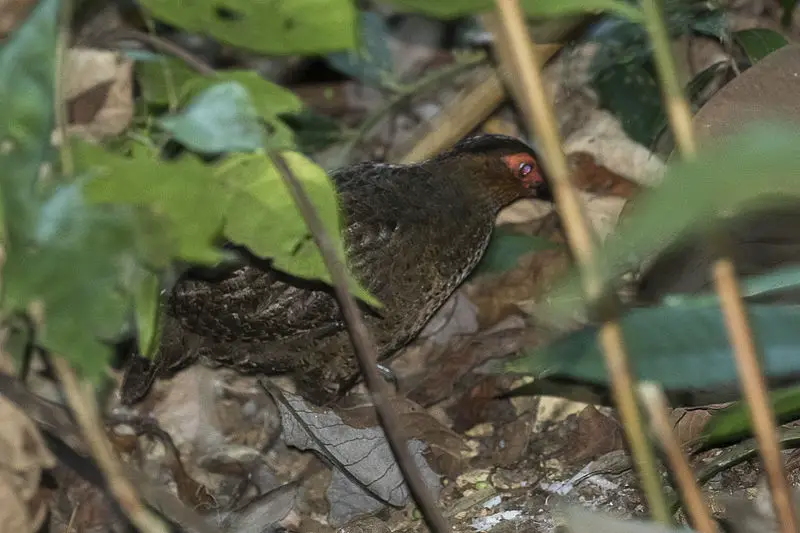
The marbled wood quail (Odontophorus gujanensis) is a species of bird in the New World quail family, and has an extensive distribution across Central America and northern South America.
This unique species typically inhabits subtropical or tropical moist lowland forests, where it can be found hiding among thick vegetation. It was formally described by German naturalist Johann Friedrich in 1789 and is recognizable for its short tail, grey legs and brownish colouring with white spots on its wings.
The marbled wood quail is relatively small compared to other members of the Quails family but what it lacks in size it makes up for with vocalizations; their loud calls are often heard throughout the forest.
Scientific classification:
| Kingdom | Animalia |
| Phylum | Chordata |
| Class | Aves |
| Order | Galliformes |
| Family | Odontophoridae |
| Genus | Odontophorus |
| Species | O. gujanensis |
33. Yellow-Bellied Tanager
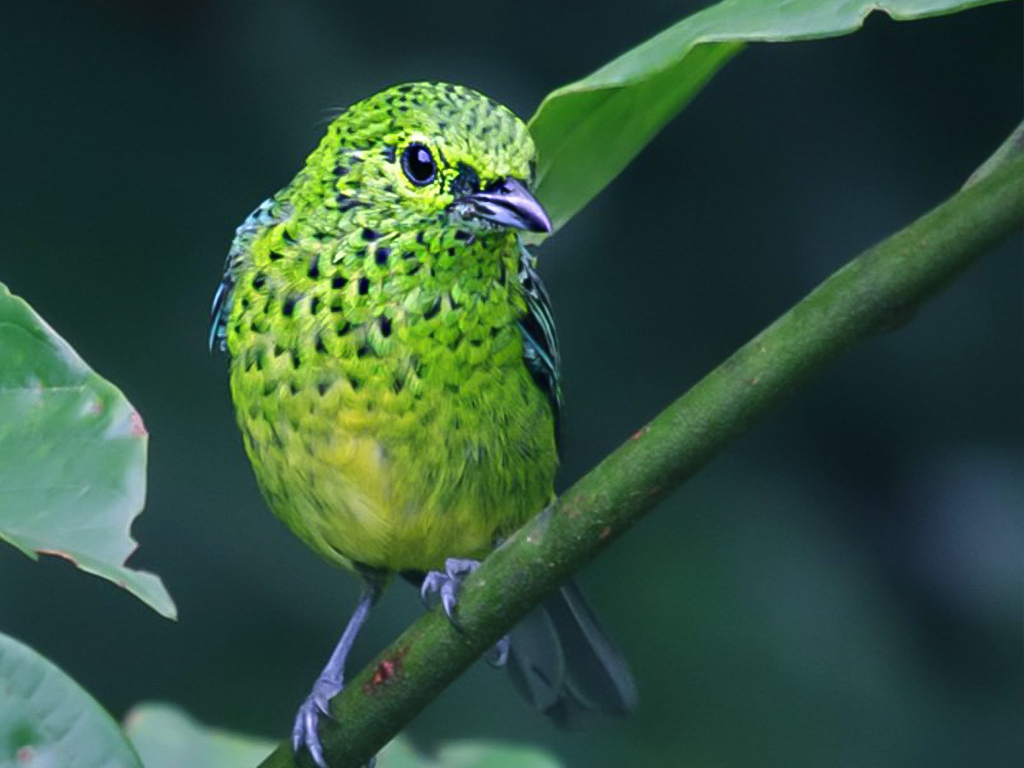
The yellow-bellied tanager is a beautiful species of bird in the Thraupidae family. It is found mainly in the western half of South America’s Amazon Basin, where it inhabits both subtropical moist lowland forests and montane forests.
The male has bright yellow underparts with dark gray wings and back, while females are duller than males but still show a white throat patch bordered by black on either side. This breathtaking species feeds on fruits as well as insects like beetles, moths, butterflies and grasshoppers amongst others.
Though its population appears to be stable overall, habitat loss due to human activities such as logging continues to threaten this stunning creature’s future survival prospects.
Scientific classification:
| Kingdom | Animalia |
| Phylum | Chordata |
| Class | Aves |
| Order | Passeriformes |
| Family | Thraupidae |
| Genus | Ixothraupis |
| Species | I. xanthogastra |
34. Rufous-Vented Chachalaca
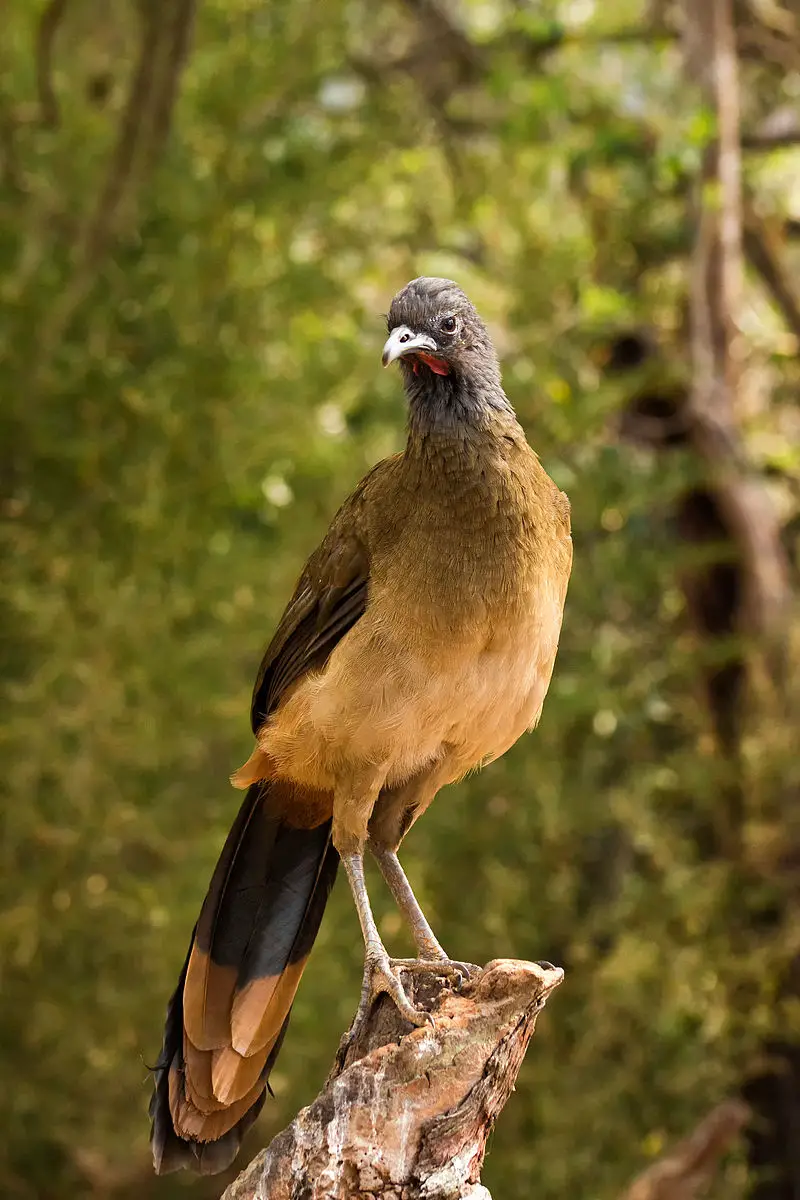
The Rufous-vented Chachalaca is a fascinating bird species, belonging to the ancient family of Cracids.
It can be found in northeast Colombia and northern Venezuela (where it’s known as guacharaca), as well as on Tobago island in Trinidad and Tobago where it’s called cocrico – one of the country’s two national birds.
With its reddish brown plumage, bright red vent feathers and white stripe above each eye, this unique looking creature stands out from other avian species.
Its diet includes fruits, nuts, seeds and leaves; while they also feed on insects such as grasshoppers or beetles if available.
The rufous-vented chachalaca typically live in groups ranging between 2–15 individuals which form strong bonds amongst themselves.
This charming bird deserves much more recognition for its beauty and uniqueness.
Scientific classification:
| Kingdom | Animalia |
| Phylum | Chordata |
| Class | Aves |
| Order | Galliformes |
| Family | Cracidae |
| Genus | Ortalis |
| Species | O. ruficauda |
35. Collared Trogon
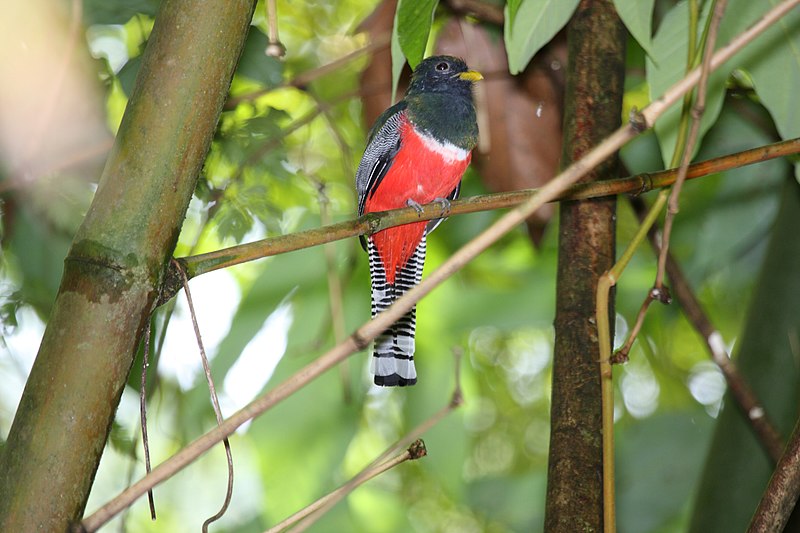
The Collared Trogon is a beautiful bird found in Mexico, Central America and northern South America. It belongs to the family of quetzals and trogons.
The International Ornithological Committee (IOC) recognizes 10 subspecies of this species, with one being called orange-bellied trogon due to its bright belly feathers.
Its plumage features colors such as iridescent greens, blues, yellows and blacks that create an attractive pattern on their wings when they take flight from branch to branch searching for food.
They primarily eat fruits but also consume insects small lizards or frogs occasionally for extra sustenance if needed.
A great majority are sedentary non migrant birds however some will travel short distances during specific periods of the year depending on where they live geographically speaking All in all these amazing creatures make a wonderful addition to any wildlife scene.
Scientific classification:
| Kingdom | Animalia |
| Phylum | Chordata |
| Class | Aves |
| Order | Trogoniformes |
| Family | Trogonidae |
| Genus | Trogon |
| Species | T. collaris |
Also Featured In: Birds that You’ll Find in Chiapas,
36. Red-Crowned Woodpecker
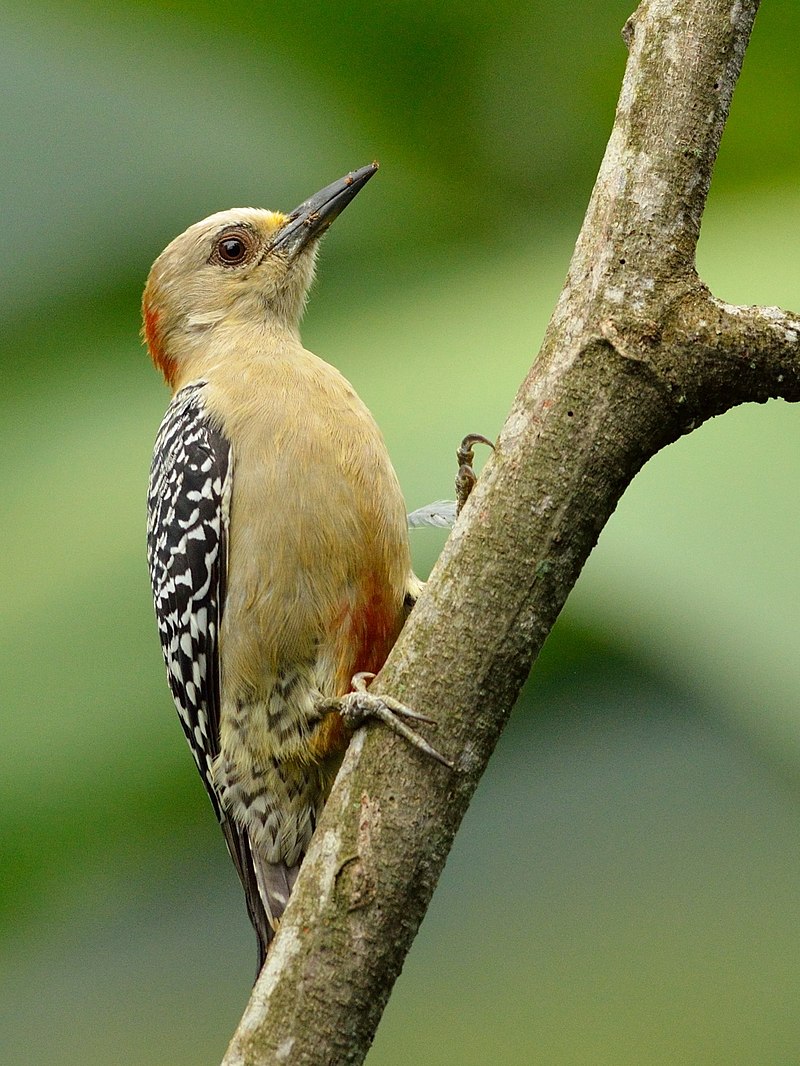
The red-crowned woodpecker is a striking bird, native to areas of Central and South America.
It measures 17 cm in length and weighs 55 g, with black and white zebra-barred wings and back contrasting against its pale buff brown underparts.
The most eye catching feature though is the male’s bright red crown, which has earned it its name.
This species prefers open forests or woodland edges where they can find their favourite food – insects hidden in dead tree trunks.
When not hunting for food these birds will often be seen drumming on trees as part of courtship rituals between males or as territorial displays towards other animals invading their territory.
Scientific classification:
| Kingdom | Animalia |
| Phylum | Chordata |
| Class | Aves |
| Order | Piciformes |
| Family | Picidae |
| Genus | Melanerpes |
| Species | M. rubricapillus |
37. Ornate Hawk-Eagle
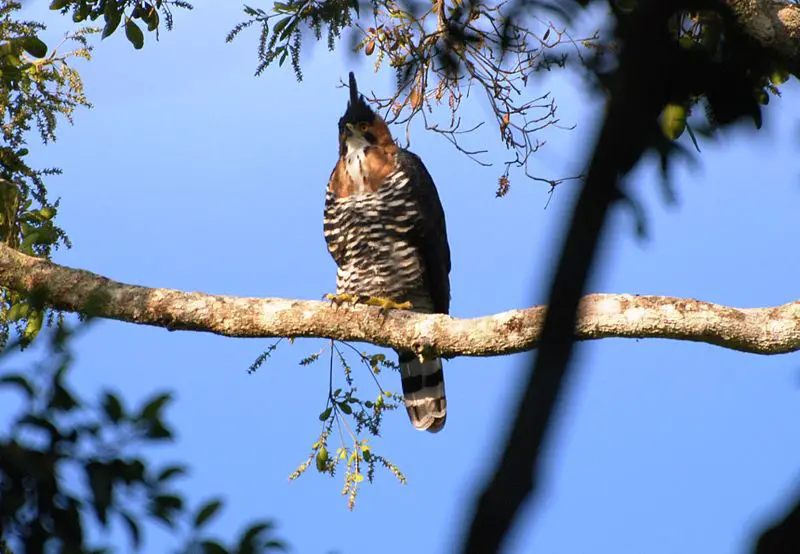
The Ornate Hawk-Eagle is a magnificent bird of prey that hails from the tropical Americas. With its striking mocha brown and white feathers, this eagle stands out among other birds in its family Accipitridae.
Male specimens are especially stunning with bold cream and black stripes along their back as well as a unique crest on top of their heads.
They have powerful talons which they use to hunt small mammals like rabbits or monkeys, but also feed upon smaller birds and reptiles found near forests or marshes where they typically reside.
This majestic raptor may sometimes be seen soaring gracefully through the sky above its habitats, showing off for onlookers below.
Scientific classification:
| Kingdom | Animalia |
| Phylum | Chordata |
| Class | Aves |
| Order | Accipitriformes |
| Family | Accipitridae |
| Genus | Spizaetus |
| Species | S. ornatus |
38. Amazon Kingfisher
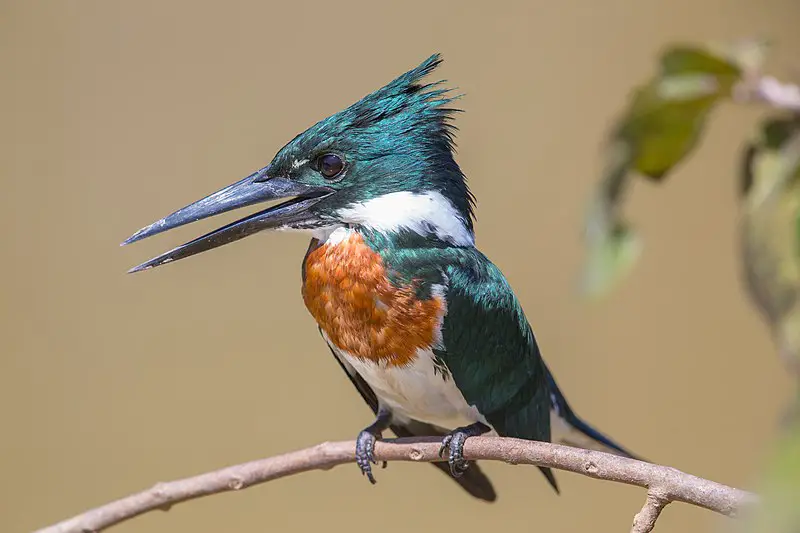
The Amazon Kingfisher is a stunning species of water kingfisher found in the lowlands of Central and South America.
It has an aqua-green head, chestnut wings with white markings, blue back and tail and yellow feet.
Its dramatic plumage makes it one of the most attractive birds in its region.
The Amazon Kingfisher can be seen perching on branches or flying close to slow moving rivers while they search for food such as fish, frogs, lizards or insects which they catch by diving into the water from above.
Despite their colorful appearance these bird are incredibly shy so it’s difficult to get too close without scaring them away.
Scientific classification:
| Kingdom | Animalia |
| Phylum | Chordata |
| Class | Aves |
| Order | Coraciiformes |
| Family | Alcedinidae |
| Subfamily | Cerylinae |
| Genus | Chloroceryle |
| Species | C. amazona |
39. Guianan Cock-Of-The-Rock
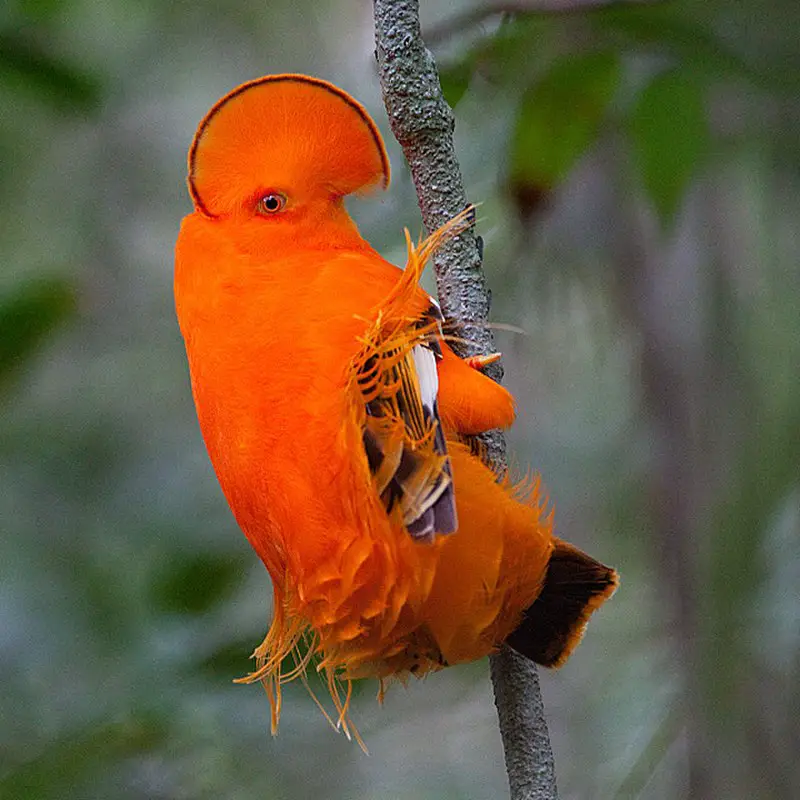
The Guianan cock-of-the-rock is an impressive South American bird, with the male having a striking orange and black plumage.
This cotinga species can be found in tropical rainforests near rocky outcrops, usually measuring about 30 cm (12 in) long and weighing around 200 to 220 g (7.1 to 7.8 oz).
The female’s feathers are brownish/dark smokey grey – generally less noticeable than the males due to their bright colours.
These birds have also been known for their unusual courtship displays involving loud calling and bowing which take place on exposed rocks or branches of tall trees.
Their diet consists mainly of fruits supplemented by invertebrates such as insects, spiders, millipedes and centipedes that they capture while flying through the canopy layer.
All in all, these beautiful creatures will make sure you never forget them after seeing one.
Scientific classification:
| Kingdom | Animalia |
| Phylum | Chordata |
| Class | Aves |
| Order | Passeriformes |
| Family | Cotingidae |
| Genus | Rupicola |
| Species | R. rupicola |
Also Featured In: Common Tropical Rainforest Birds, Birds that Live in Guyana
40. Black-Backed Antshrike
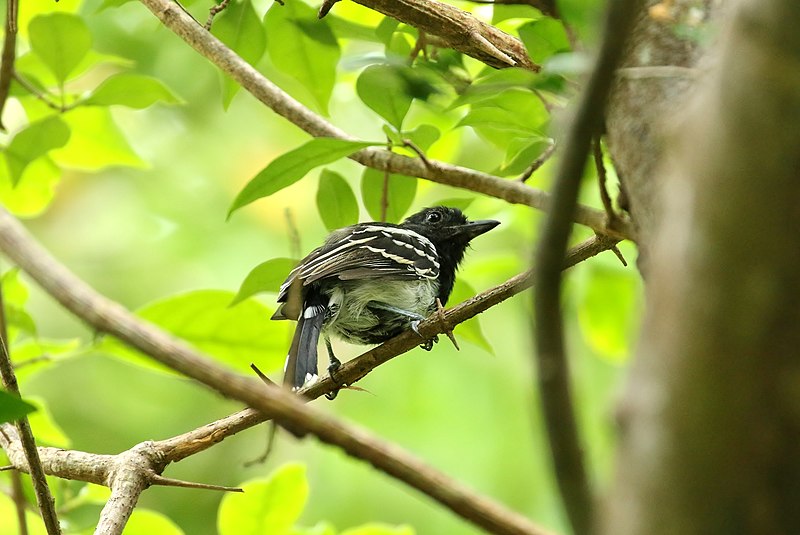
The Black-backed Antshrike (Thamnophilus melanonotus) is a species of bird found in Colombia and Venezuela. This small songbird belongs to the family Thamnophilidae, which includes over 200 antbirds.
It can be identified by its black back with white barring on the wings, yellowish underparts, gray head and face patterned with stripes or spots of red or orange coloration. The diet consists mainly of insects such as ants and termites that it hunts from perches among dense foliage close to the ground.
These birds are usually seen singly near streams or along trails but sometimes form pairs during breeding season when they tend to become more vocal than usual.
They typically make cup shaped nests at low levels in trees where both sexes participate equally in incubating eggs for about two weeks before fledging takes place after 15 days or so.
Despite being locally common this species faces threats due to deforestation resulting from agricultural expansion leading some conservationists recommend that further research should focus on defining their range limits accurately while monitoring its population trends in order protect them better moving forward.
Scientific classification:
| Kingdom | Animalia |
| Phylum | Chordata |
| Class | Aves |
| Order | Passeriformes |
| Family | Thamnophilidae |
| Genus | Thamnophilus |
| Species | T. melanonotus |
41. Bar-Crested Antshrike
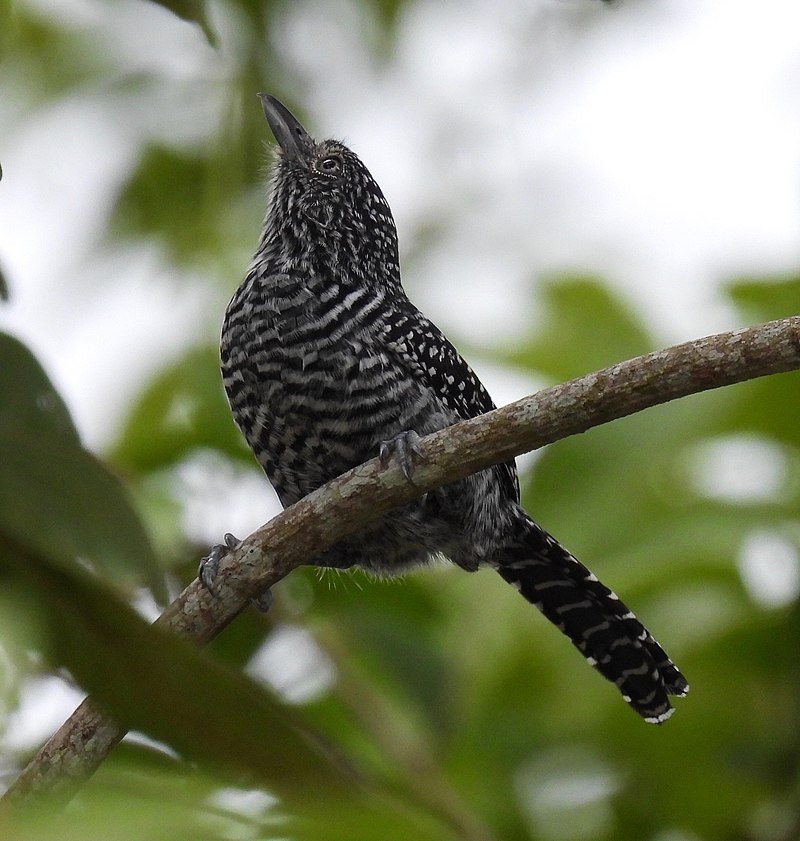
The Bar-crested antshrike is a species of bird in the Thamnophilidae family, native to Colombia and Venezuela. It inhabits dry forest areas as well as moist montane forests and heavily degraded former woods.
This small bird has distinctive black and white stripes on its upperparts with brownish wings, while its underparts are grey or buffy-white marked with some dark streaks.
Its head features a long crest which can be raised when excited or alarmed; this gives it an interesting look compared to other birds that live in the same area.
The bar-crested ant shrike is found singly, in pairs or sometimes family groups depending on the time of year where they feed mainly by probing into vegetation for insects such as beetles and caterpillars among others.
Scientific classification:
| Kingdom | Animalia |
| Phylum | Chordata |
| Class | Aves |
| Order | Passeriformes |
| Family | Thamnophilidae |
| Genus | Thamnophilus |
| Species | T. multistriatus |
42. Bay-Headed Tanager
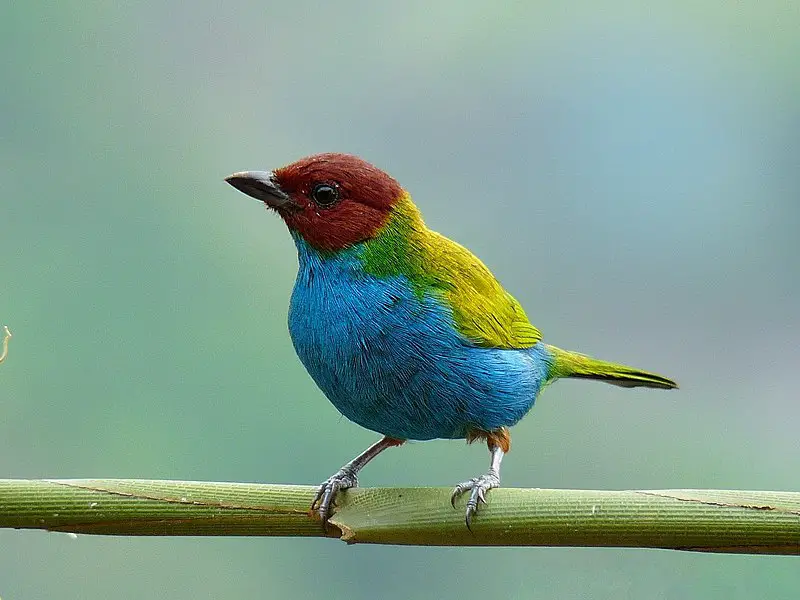
The Bay-headed Tanager is a medium-sized passerine bird that can be found in parts of Costa Rica, Panama, South America and even Trinidad. It was first described by Swedish naturalist Carl Linnaeus back in 1758.
This tanager has an olive green head with black streaks on its wings and pale blue breast along with dark bluish grey upperparts.
They feed primarily on fruits but also eat insects such as flies and caterpillars when available.
The male bay-headed tanagers are more brightly coloured than females; they have yellowish heads while the female’s are duller or brownish colouring.
These birds usually live alone or form small flocks during winter months to migrate southward for breeding season around April to September depending upon location.
Scientific classification:
| Kingdom | Animalia |
| Phylum | Chordata |
| Class | Aves |
| Order | Passeriformes |
| Family | Thraupidae |
| Genus | Tangara |
| Species | T. gyrola |
43. Barred Antshrike
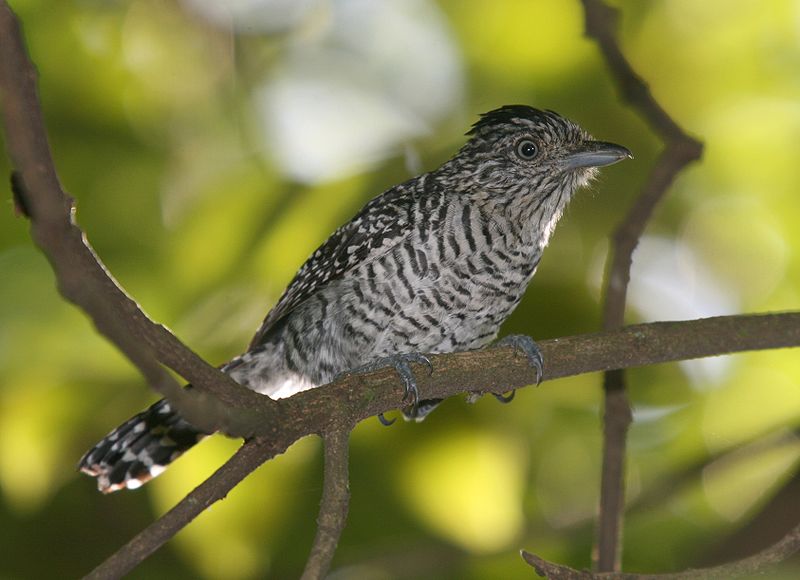
The Barred Antshrike is a beautiful bird belonging to the antbird family. It has an amazing range, being found in Mexico, Central America, Trinidad and Tobago as well as most of South America east of the Andes.
Even southern Texas has one accepted record. This small passerine can be spotted inhabiting wooded habitats that may consist of both dry and humid forests or even plantations with trees.
Its plumage consists mainly of black barring on its chestnut back along with white stripes on its wings giving it a unique look in flight.
Despite their shy nature they are quite vocal during breeding season when males sing from high perches for courtship displays; this is also when you’re likely to spot them at best.
Scientific classification:
| Kingdom | Animalia |
| Phylum | Chordata |
| Class | Aves |
| Order | Passeriformes |
| Family | Thamnophilidae |
| Genus | Thamnophilus |
| Species | T. doliatus |
44. Speckled Tanager
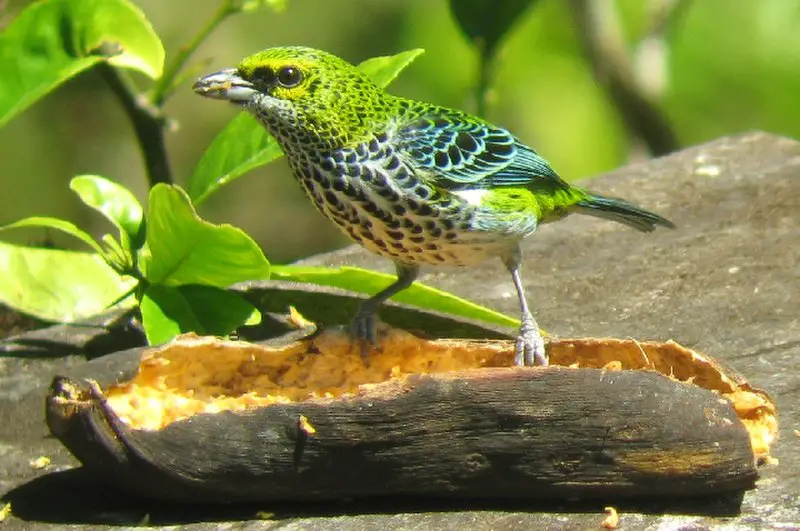
The Speckled Tanager (Ixothraupis guttata) is an attractive passerine bird which breeds in Central and South America. It has a tan body with black-streaked wings and tail, white spots on its back, and yellowish underparts.
This species is found mainly in Costa Rica, Panama, Trinidad, Venezuela, Colombia, Guyana Suriname as well as Brazil’s northern regions.
In addition to these areas there have also been sight records from French Guiana. The Speckled Tanager appears to be closely related to the Spotted Tanager (I.
punctata), which it replaces further south of its range but only slightly differs from in terms of physical characteristics; both share similar plumage colors such as those described above alongside similarly shaped bills that are adapted for feeding upon soft matter like fruits or insects.. All in all this is a beautiful species worth admiring.
Scientific classification:
| Kingdom | Animalia |
| Phylum | Chordata |
| Class | Aves |
| Order | Passeriformes |
| Family | Thraupidae |
| Genus | Ixothraupis |
| Species | I. guttata |
45. Tepui Tinamou
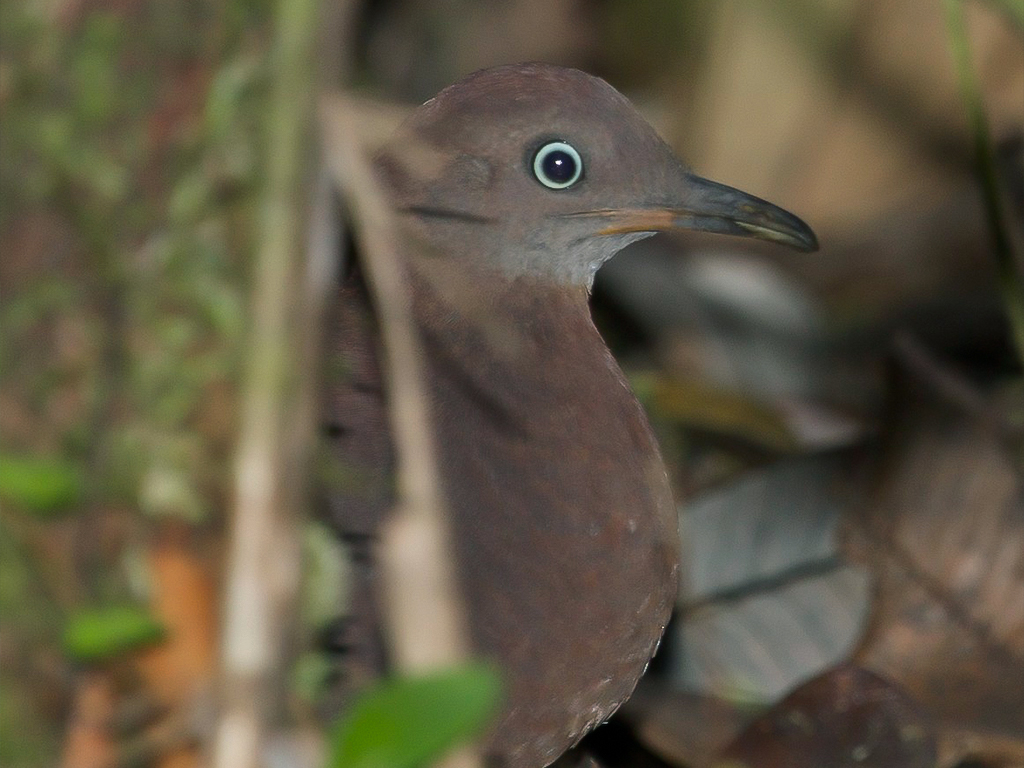
The Tepui Tinamou is a type of ground bird found in the montane moist forests on tepuis, or flat-topped mountains, located in southeastern Venezuela. It is one of few ratites that can actually fly, although it isn’t a strong flier.
The species has evolved from prehistoric flying birds and this monotypic species stands out due to its distinct behavior compared to other tinamous. These birds are nocturnal and their diet consist mainly of insects as well as some types of fruits.
They form monogamous pairs during the breeding season with both parents taking turns incubating eggs for about two weeks before hatching into chicks that will soon become independent six months later.
This fascinating creature has adapted itself to many different environments over time making it an important part of Venezuelan biodiversity.
Scientific classification:
| Kingdom | Animalia |
| Phylum | Chordata |
| Class | Aves |
| Infraclass | Palaeognathae |
| Order | Tinamiformes |
| Family | Tinamidae |
| Genus | Crypturellus |
| Species | C. ptaritepui |
46. Yellow-Knobbed Curassow
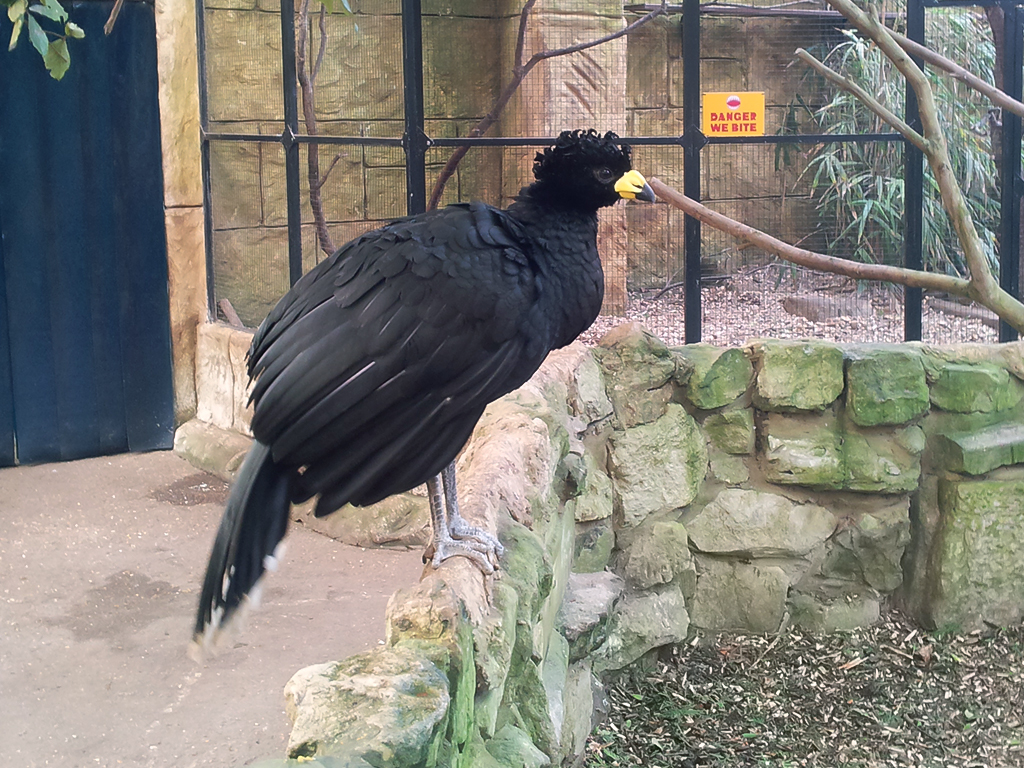
The Yellow-knobbed Curassow is a species of bird found in Colombia and Venezuela. It was formerly classified as a subspecies of the Blue-billed Curassow, but it has since been determined to be monotypic – meaning no other subspecies exist for this particular species.
This elegant bird can reach up to 70 cm in length, with males having an unmistakable yellow knob atop their head and neck region that females lack.
The overall plumage ranges from blackish brown to rusty tan depending on the individual’s sex; while its diet consists mainly of fruits and seeds which it finds among trees and shrubs at lowlands or hillsides near forest edges or clearings.
Currently listed as Vulnerable by IUCN due to habitat destruction and illegal hunting (mainly for food), conservation efforts are being made across both countries in order protect these birds before they become extinct.
Scientific classification:
| Kingdom | Animalia |
| Phylum | Chordata |
| Class | Aves |
| Order | Galliformes |
| Family | Cracidae |
| Genus | Crax |
| Species | C. daubentoni |